Wainscoting adds timeless architectural detail and protection to nursery walls, creating a charming and functional backdrop for your baby’s room. From classic beadboard to modern geometric panels, these 20 nursery wainscoting ideas offer a variety of textures, heights, and finishes to suit every style—from soothing neutrals to bold color contrasts. Whether you’re working with a full renovation or seeking a simple DIY upgrade, wainscoting provides durability against scuffs and spills while framing artwork, shelving, or wallpaper accents above. Explore options like peel-and-stick panels for a temporary solution, upholstered fabric bases for a cozy touch, and even integrated storage for maximum functionality. With careful paint choices and thoughtful installation heights, you can create a space that grows with your child and stands the test of time.
1. Classic Beadboard Wainscoting
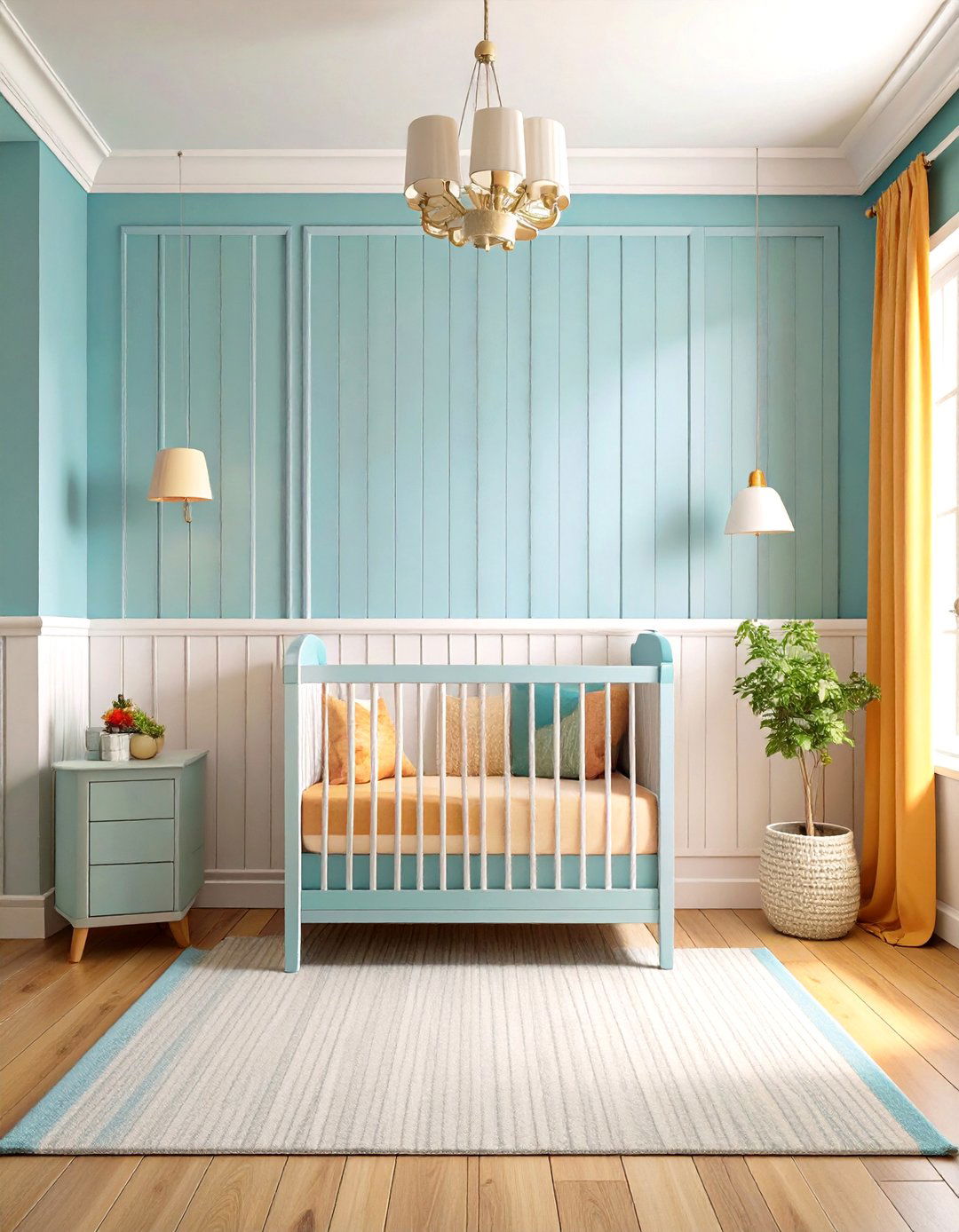
Classic beadboard wainscoting features vertical tongue-and-groove panels that extend along the lower third of the wall, creating a timeless, textured backdrop that complements nursery styles from traditional to cottage chic while also protecting walls from scuffs near cribs and changing tables; by choosing a crisp white or soft pastel finish, parents enhance brightness and spaciousness, and when paired with coordinating trim and a delicate chair rail, it delivers a polished, cohesive look that is both durable and endlessly charming.
2. Board and Batten Wainscoting
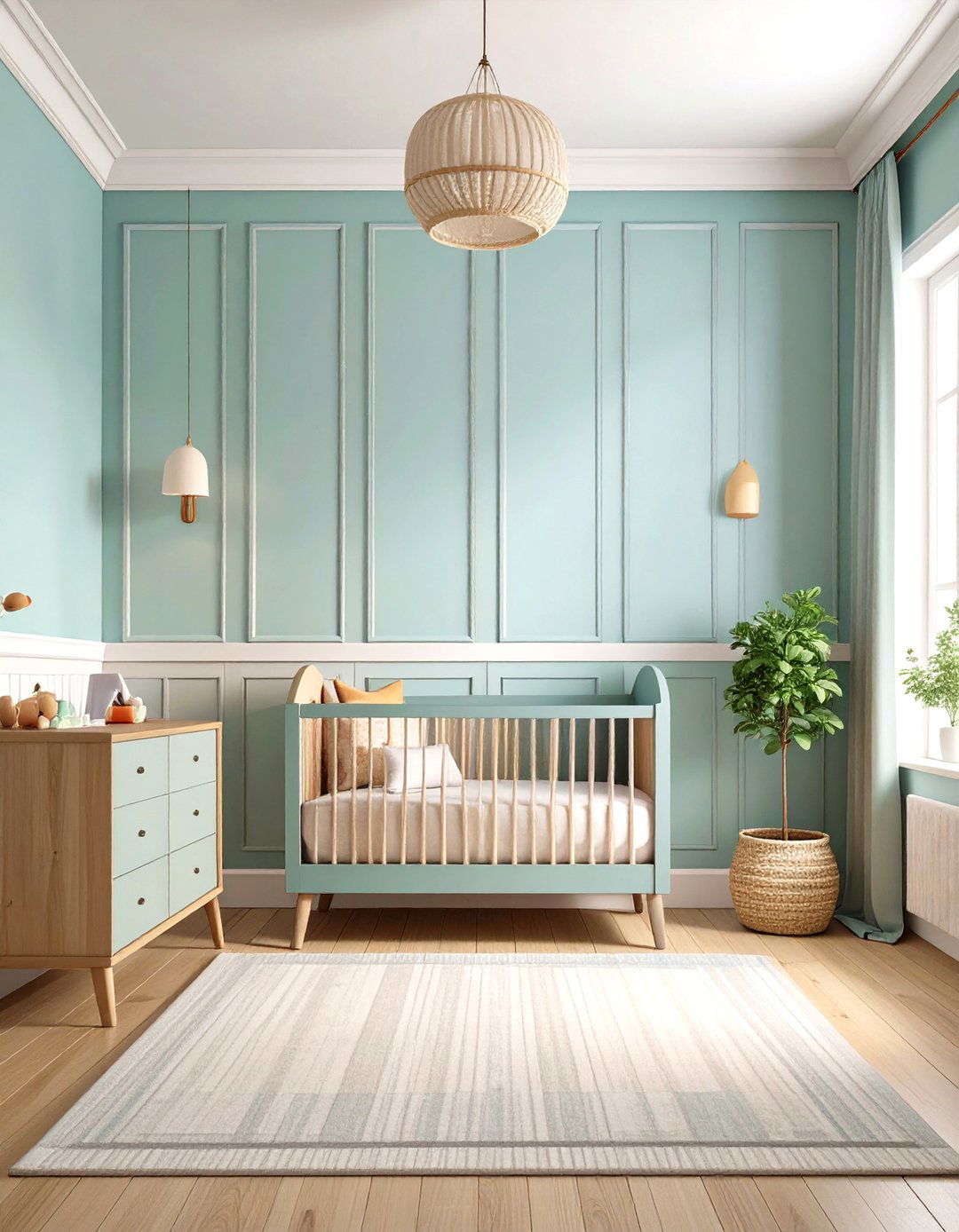
Board and batten wainscoting uses wider flat panels (boards) with narrow battens covering the seams to create a pronounced, linear grid that adds depth and architectural interest; in a nursery, the style works beautifully with neutral or contrasting two-tone color schemes, and its clean lines complement both modern minimalistic decors and rustic farmhouse themes for an elevated yet approachable look.
3. Picture Frame Molding Wainscoting

Picture frame molding wainscoting installs decorative rectangular frames directly onto the wall’s lower portion, offering a gallery-inspired effect that showcases simple molding profiles; this treatment provides subtle sophistication and can be painted in the same hue as the wall above for a tonal effect or in a contrasting shade to highlight each panel’s shape, making it ideal for pairing with framed baby photos and whimsical art prints.
4. Two-Tone Painted Wainscoting
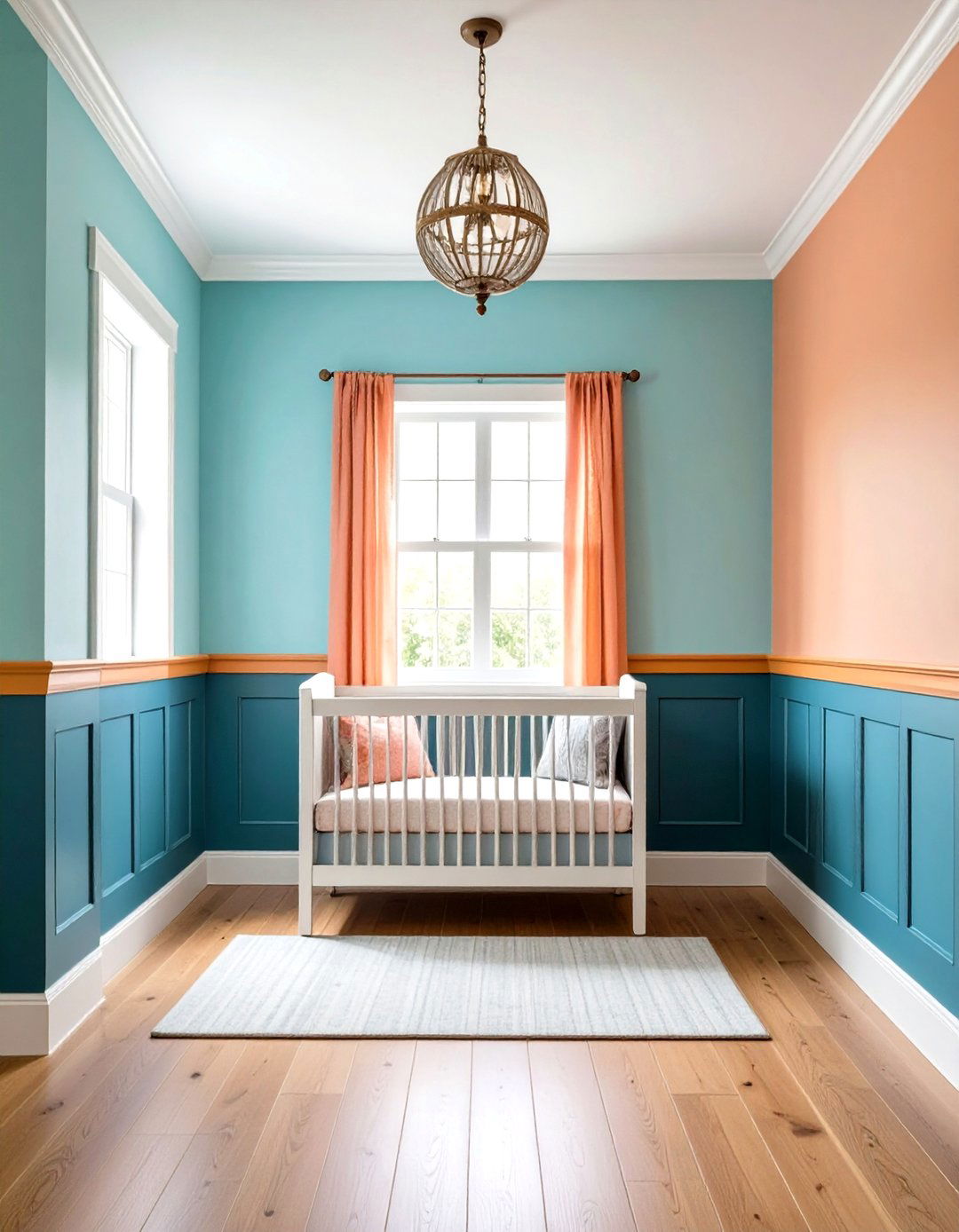
Two-tone painted wainscoting features a darker or coordinating color on panels below, separated by a chair rail from a lighter, complementary hue above, visually anchoring nursery furniture and adding balanced contrast; this approach accentuates architectural detail and allows for playful experimentation with pastel shades below and crisp neutrals overhead, ensuring the room feels both grounded and airy.
5. Shiplap Wainscoting
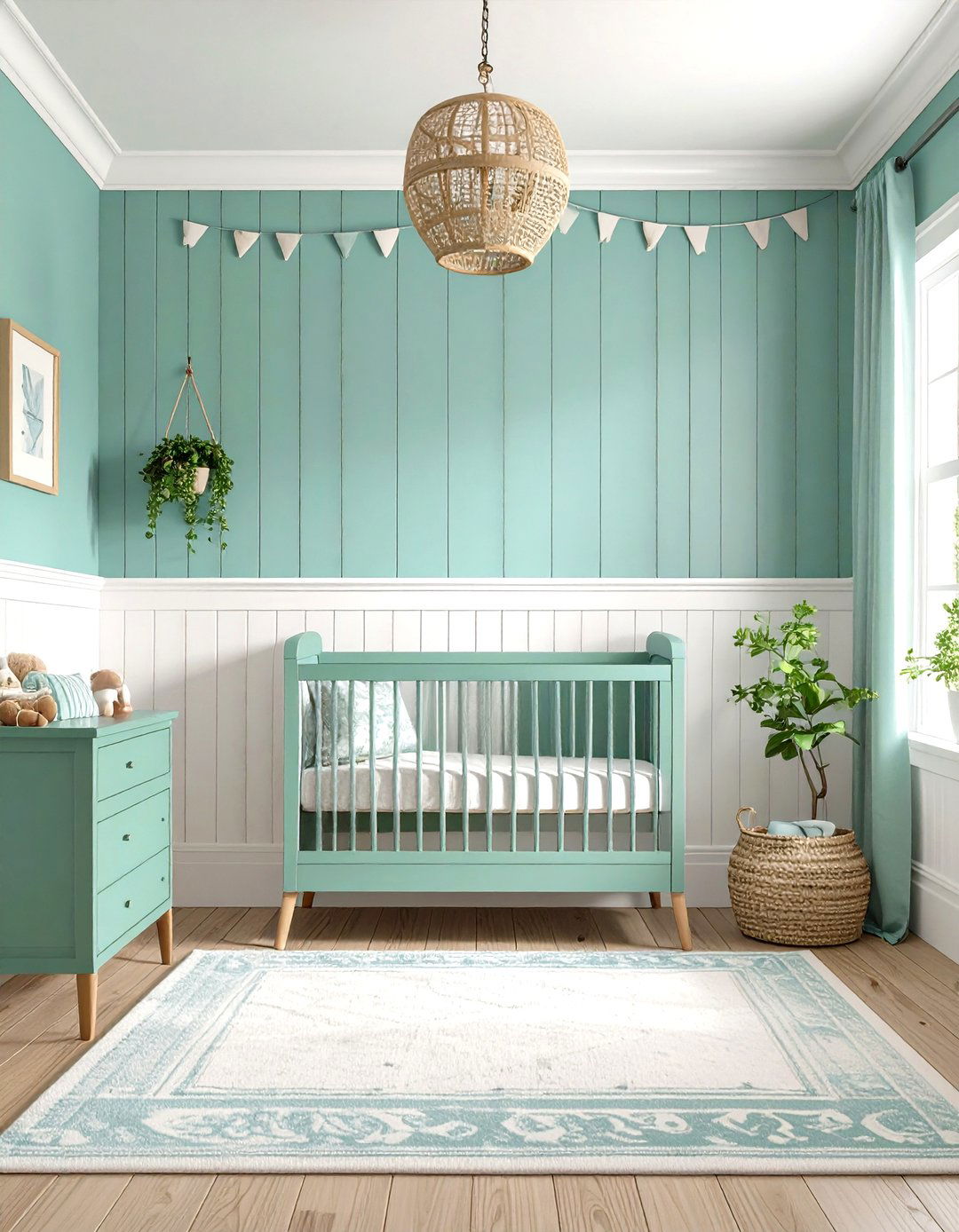
Shiplap wainscoting, characterized by horizontal wood boards that overlap slightly, brings a coastal or farmhouse vibe to nurseries; the elongated lines can make smaller rooms feel wider, and when painted a uniform color like white or sage green, they create a soothing backdrop that works with natural textures, woven rugs, and light-filled spaces.
6. Scalloped-Edge Wainscoting
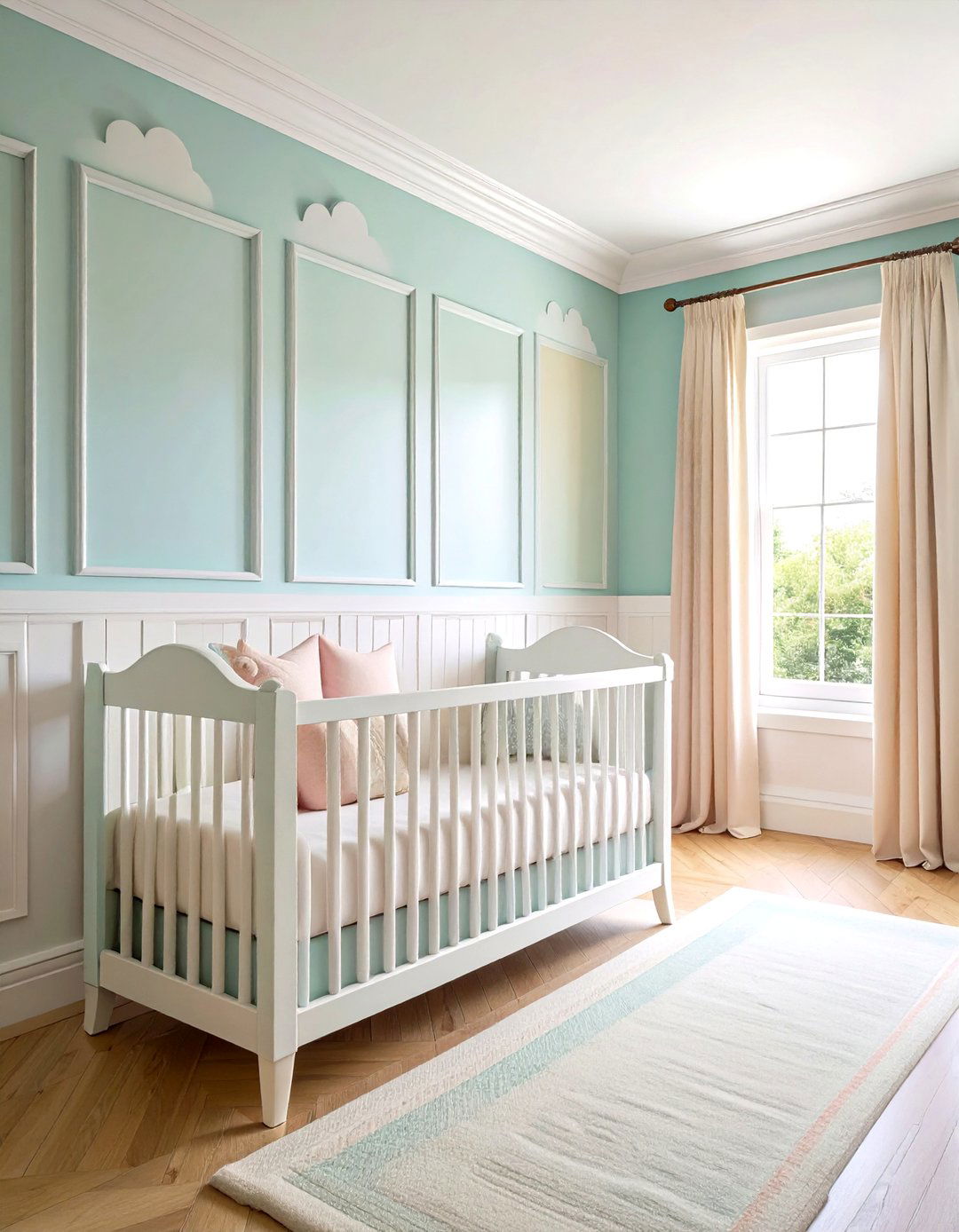
Scalloped-edge wainscoting replaces straight tops with gentle curves, introducing a whimsical, cloud-like outline along the chair rail; this playful shape softens the room’s geometry, lending a fairytale quality perfect for nurseries aiming for a dreamy, storybook aesthetic, especially when painted in dreamy pastels or complemented by mural wallpaper above.
7. Curved Panel Wainscoting
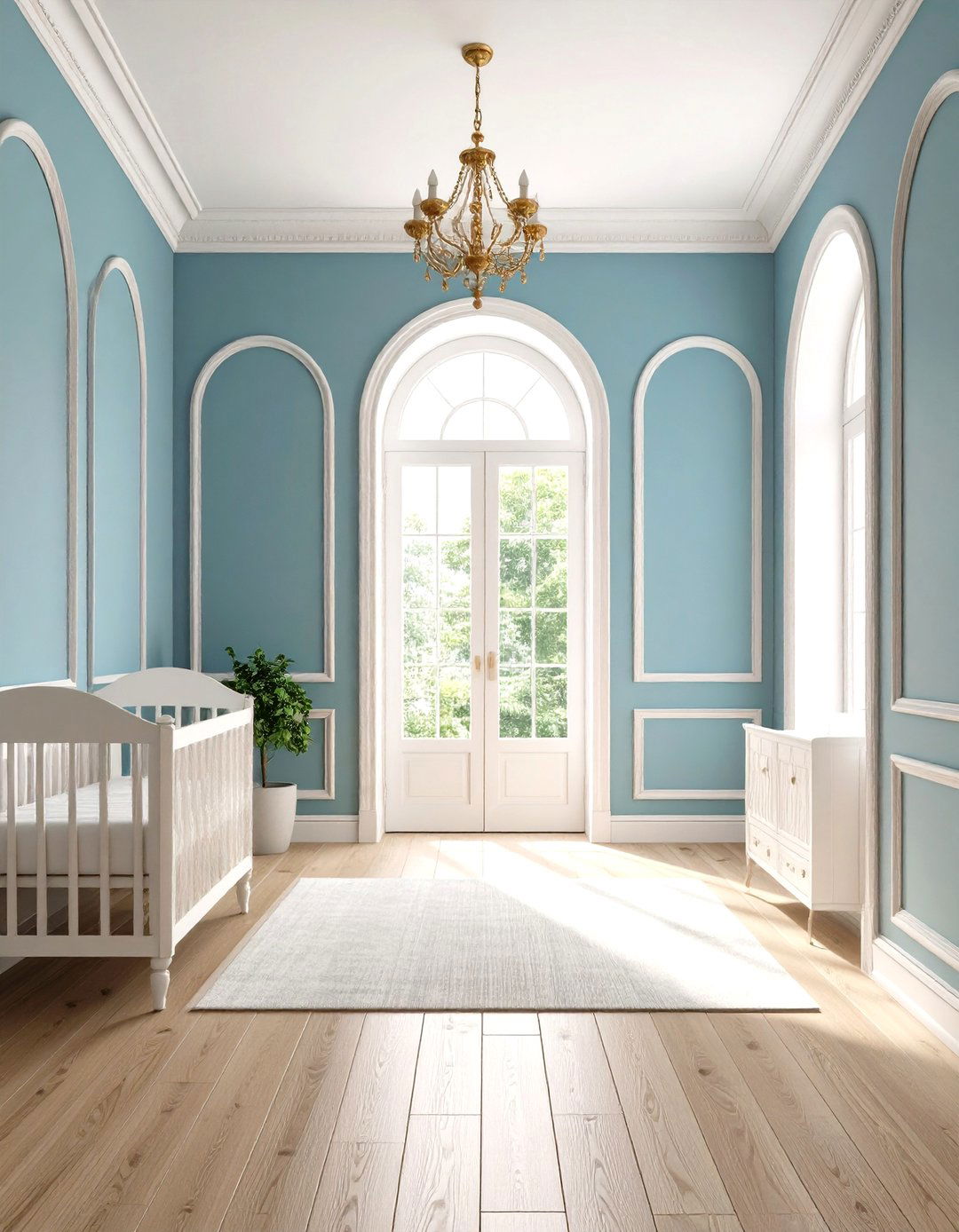
Curved panel wainscoting incorporates arched or bowed molding within each panel, mimicking door-top arches, which adds subtle, sophisticated dimension and echoes classical architecture; in a nursery, this elegant detail introduces a refined focal point that balances softness with structure, and it can be highlighted by a monochromatic palette or a gentle metallic wash on raised areas.
8. Floral Wallpaper Above Chair Rail
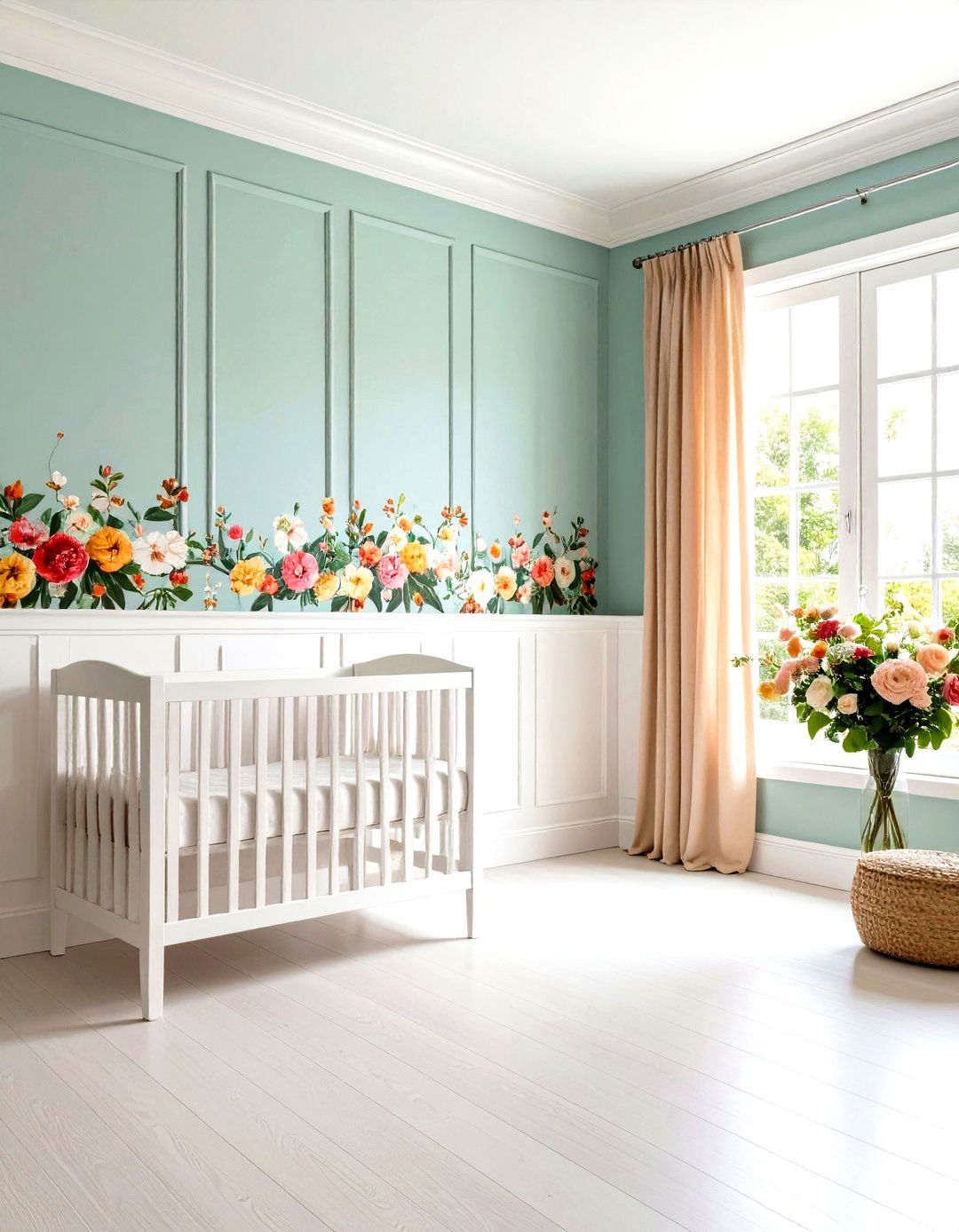
Combining simple, crisp wainscoting below with floral or botanical wallpaper above the chair rail creates a lively yet restrained accent wall; this method uses the toughness of wainscoting to prevent wallpaper damage near the floor, while drawing the eye upward to delicate patterns that infuse nature-inspired charm and color into the nursery space.
9. Temporary Peel-and-Stick Panels
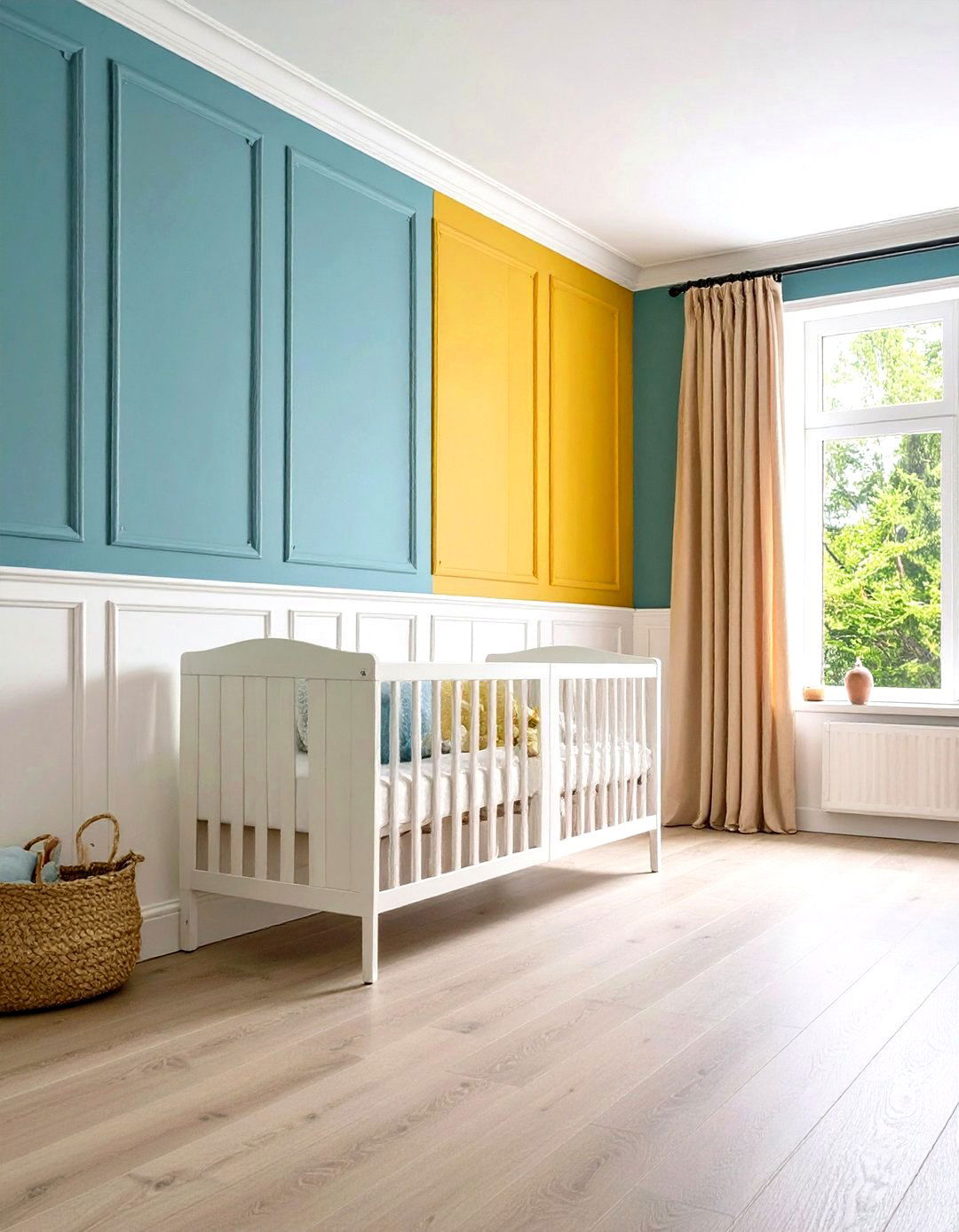
For renters or short-term nurseries, peel-and-stick wainscoting panels offer quick installation and removal without damage; available in vinyl or lightweight PVC, these panels mimic traditional molding profiles and can be painted after application, allowing families to achieve board-and-batten or beadboard textures without professional carpentry or permanent alterations.
10. Upholstered Fabric Wainscoting
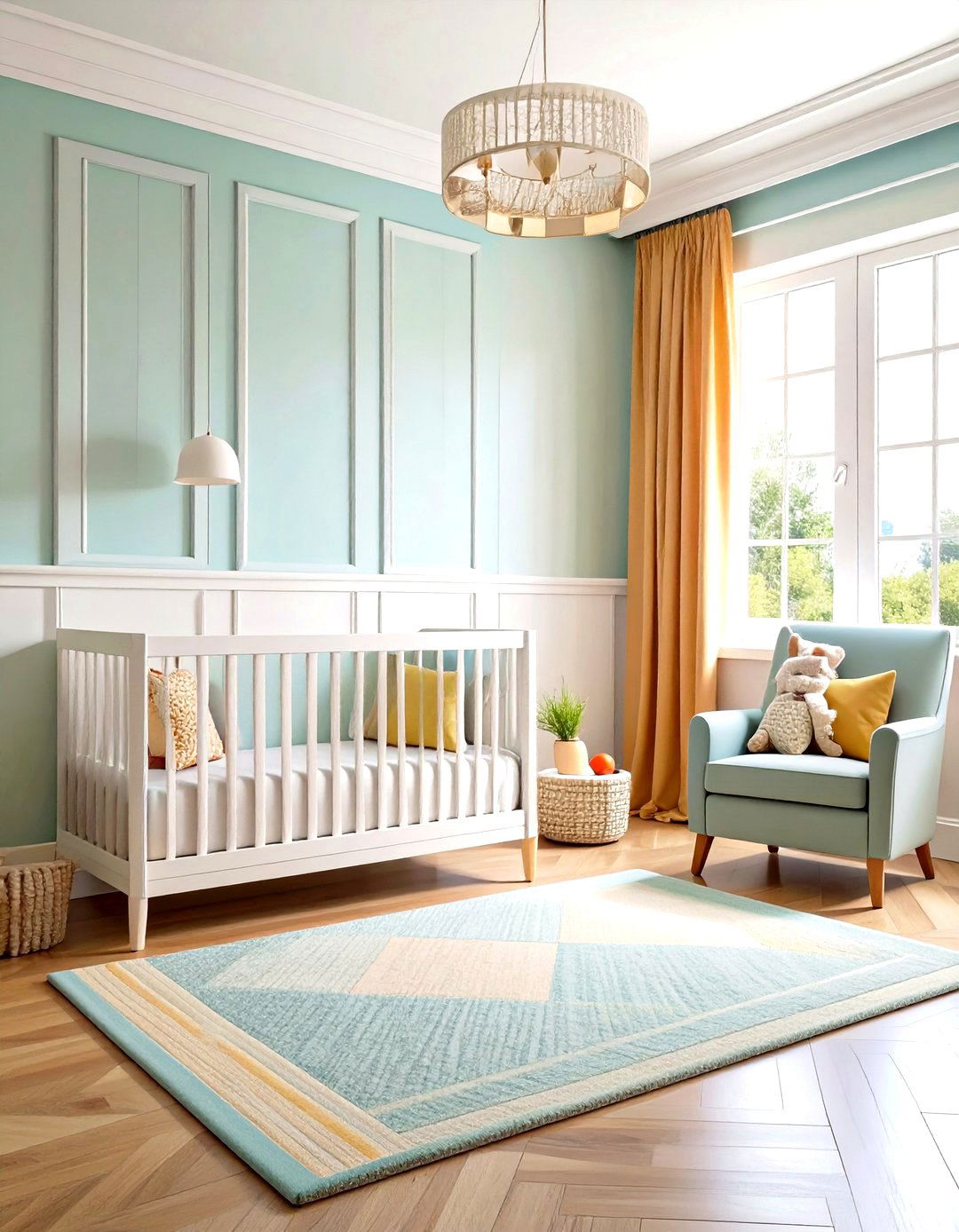
Upholstered fabric wainscoting wraps the lower wall in padded panels covered with durable, wipe-clean fabric or vinyl, adding tactile softness and acoustic dampening—ideal for noisy playtime or late-night feedings; this approach also allows the introduction of playful textile patterns or plush materials, transforming the wainscoting into a comfy, protective buffer around cribs and play areas.
11. High-Contrast Color Blocking
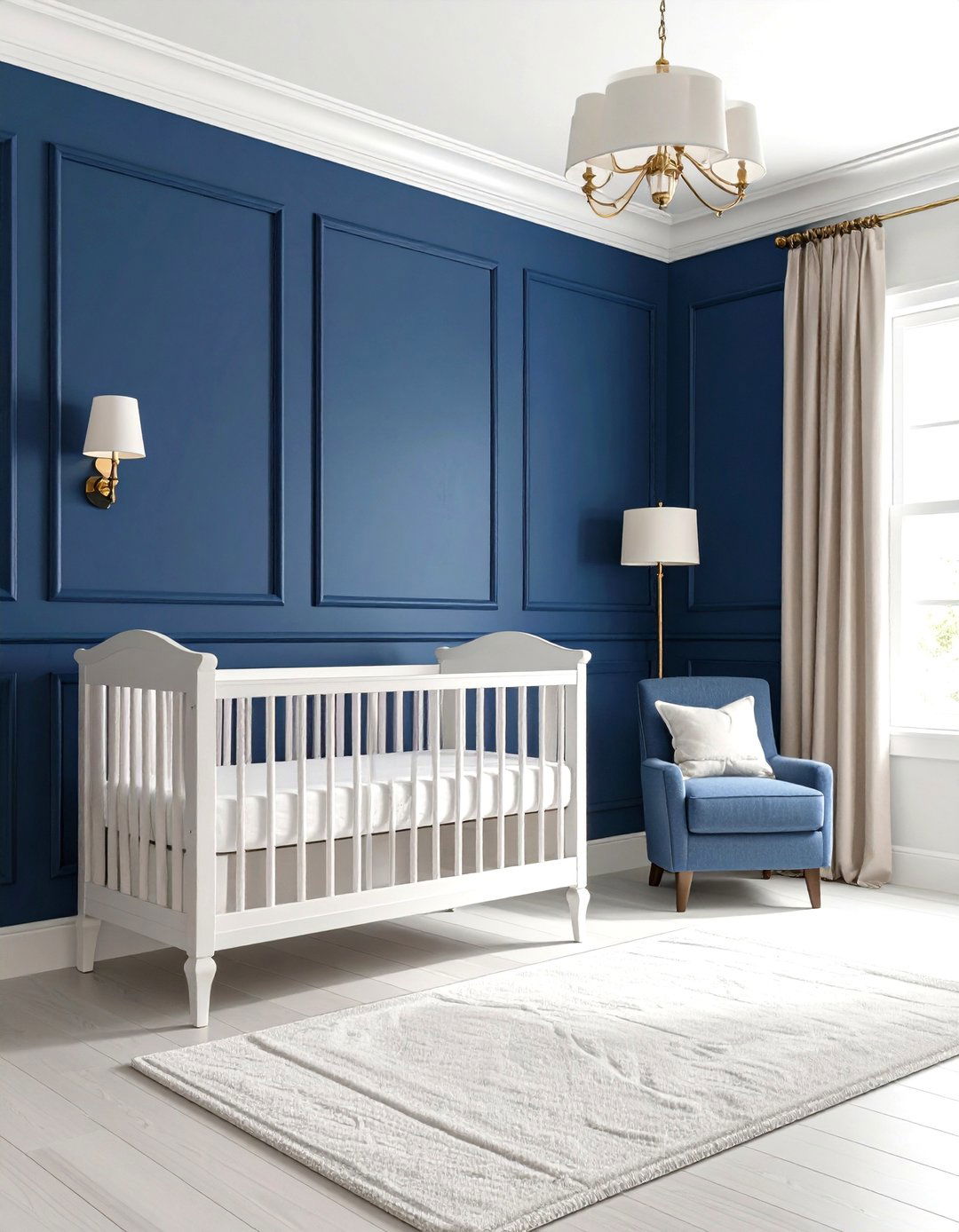
High-contrast color blocking uses bold hues on wainscoting—think navy, charcoal, or blush—while keeping the upper wall neutral or pale; this striking approach emphasizes the structural nature of the panels and makes a dramatic statement in the nursery, framing crib art or shelving and reinforcing a modern, graphic design sensibility.
12. Natural Wood Finish
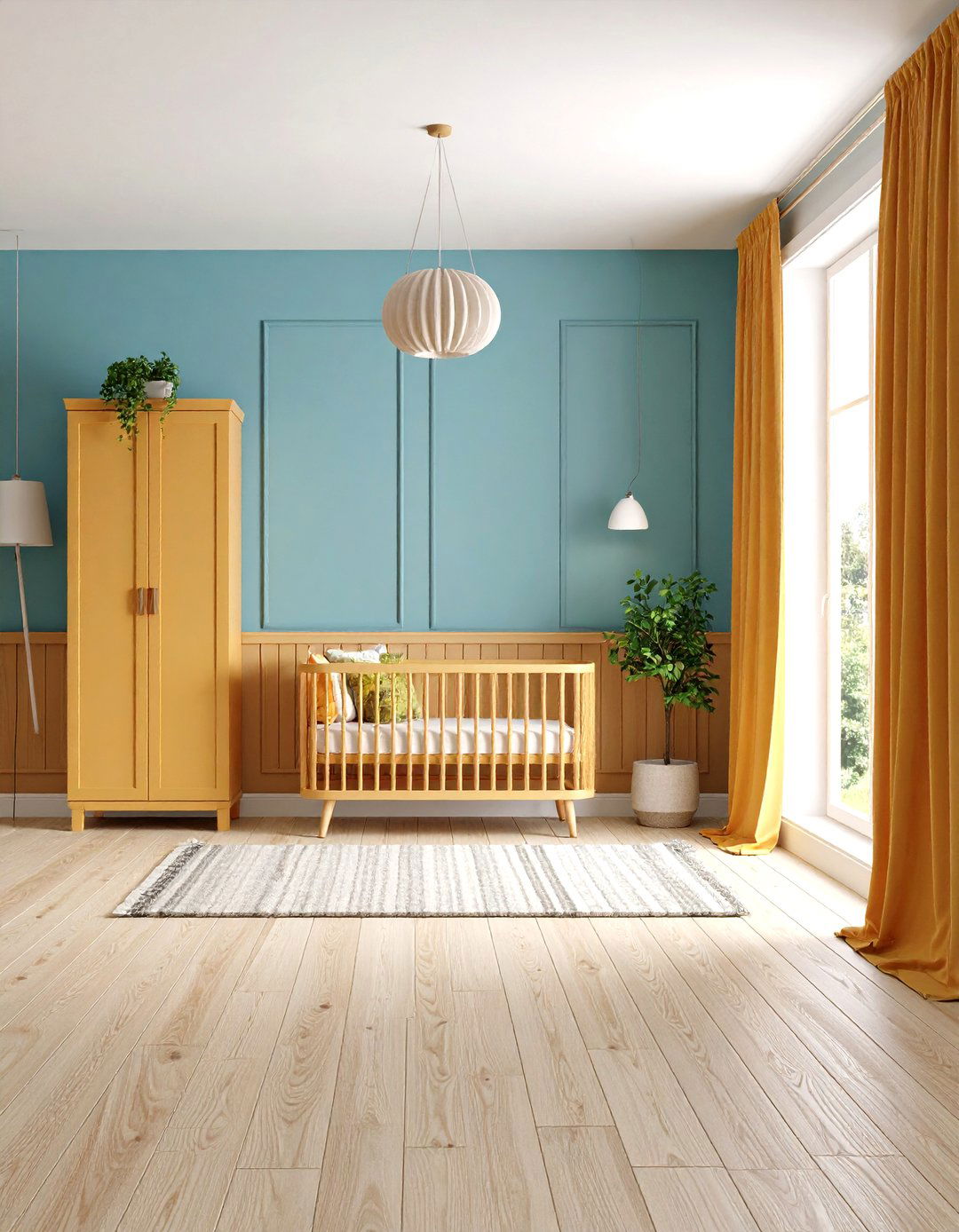
Leaving wainscoting in a clear-coated or stained natural wood finish introduces warmth and organic texture into the nursery; this style pairs beautifully with greenery accents, rattan furnishings, and earthy textiles, fostering a calming, nature-inspired environment that evolves with the child’s growing tastes.
13. Farmhouse Style Wainscoting

Farmhouse wainscoting embraces wide, rustic boards with intentional distressing or reclaimed wood to capture a lived-in, cozy look; paired with galvanized metal accents, woven baskets, and muted paint hues, it creates a welcoming backdrop that brings countryside charm indoors without feeling overly theme-park kitschy.
14. Modern Minimalist Wainscoting
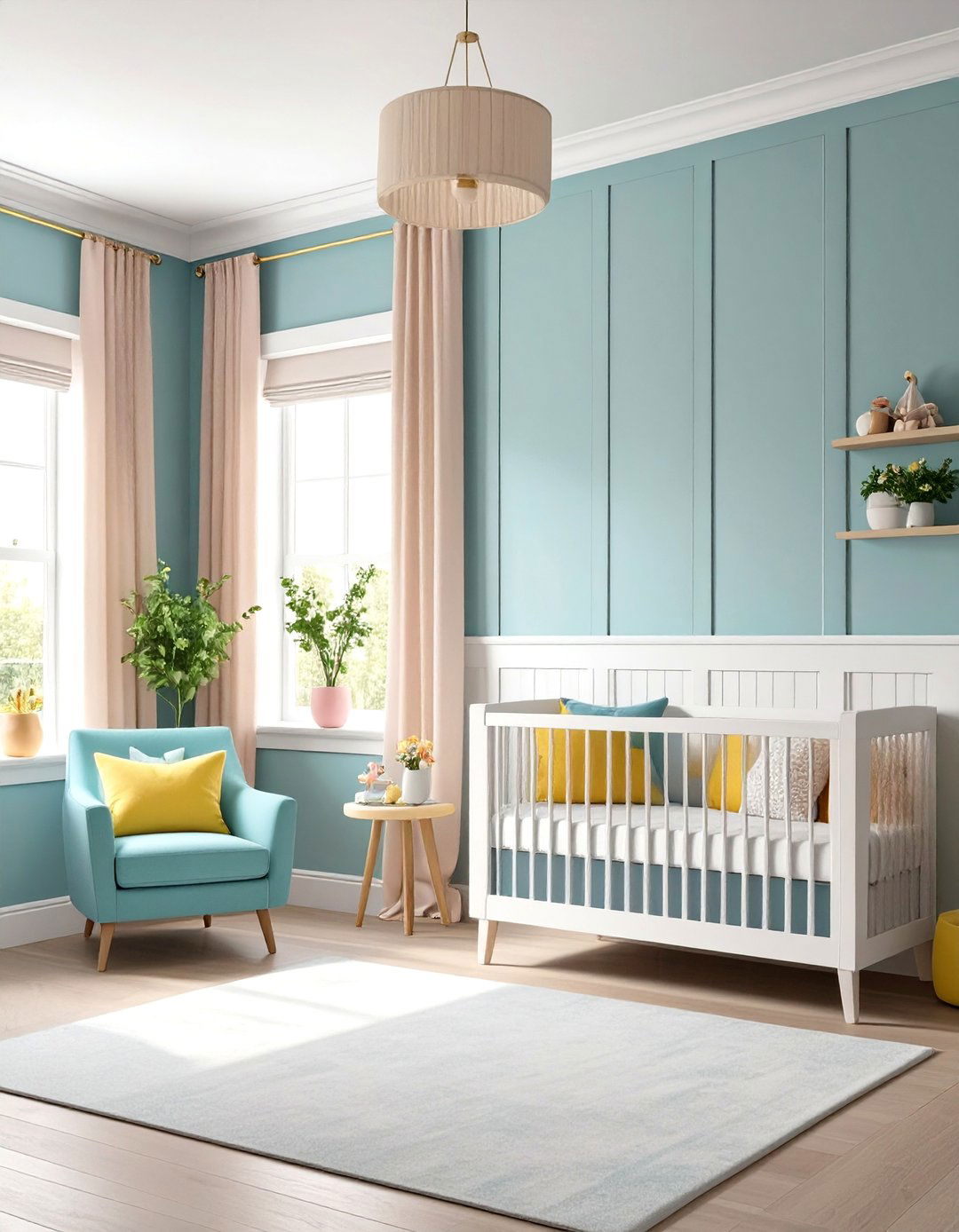
Modern minimalist wainscoting features sleek, unadorned panels painted the same color as the upper walls, with ultra-thin trim profiles and hidden fasteners; this streamlined treatment adds subtle dimension without visual clutter, making it ideal for monochromatic nurseries or those seeking a calm, clutter-free environment.
15. Geometric Pattern Wainscoting
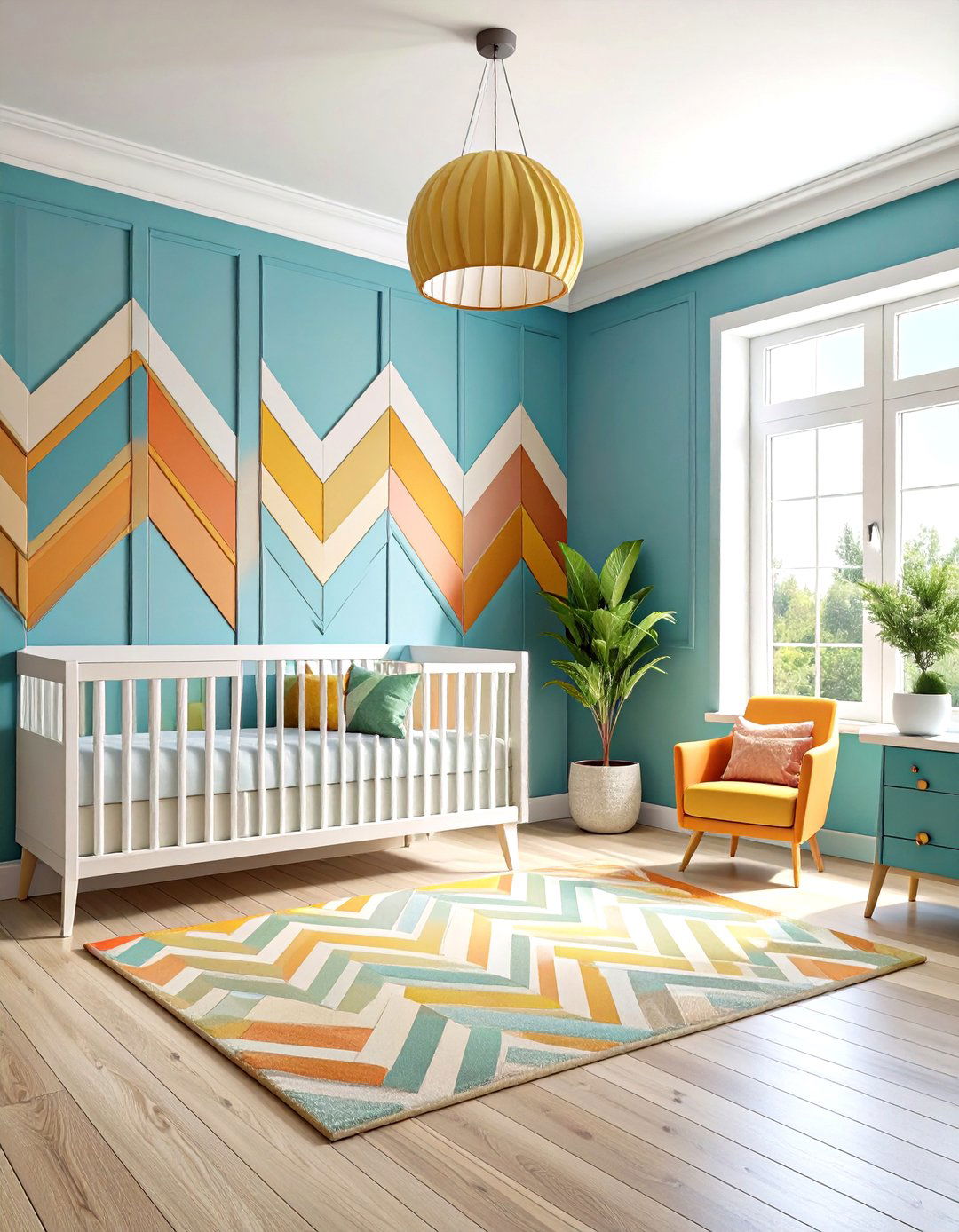
Geometric pattern wainscoting uses angled battens or molding in chevron, diamond, or lattice layouts for a contemporary twist; this dynamic configuration brings energetic movement to the lower wall, offering a playful visual rhythm that resonates with other geometric accents like mobiles, rugs, or light fixtures.
16. Integrated Storage & Wainscoting
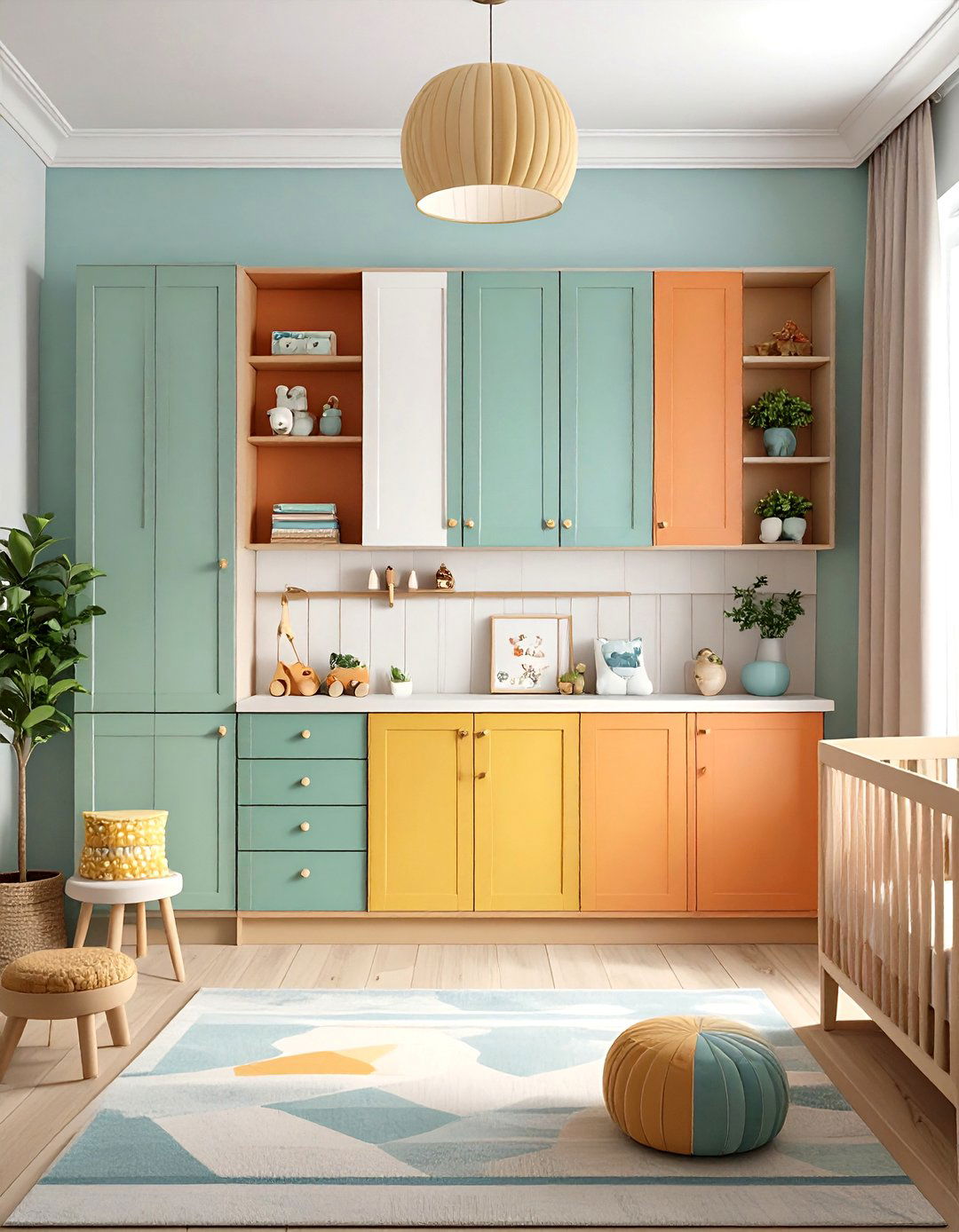
Incorporating shallow cubbies or ledges into the wainscoting base creates built-in storage for books, toys, or nightlight fixtures; this multifunctional design maximizes floor space and keeps the nursery tidy, all while maintaining the cohesive look of continuous wall paneling.
17. Built-In Bookshelf Wainscoting
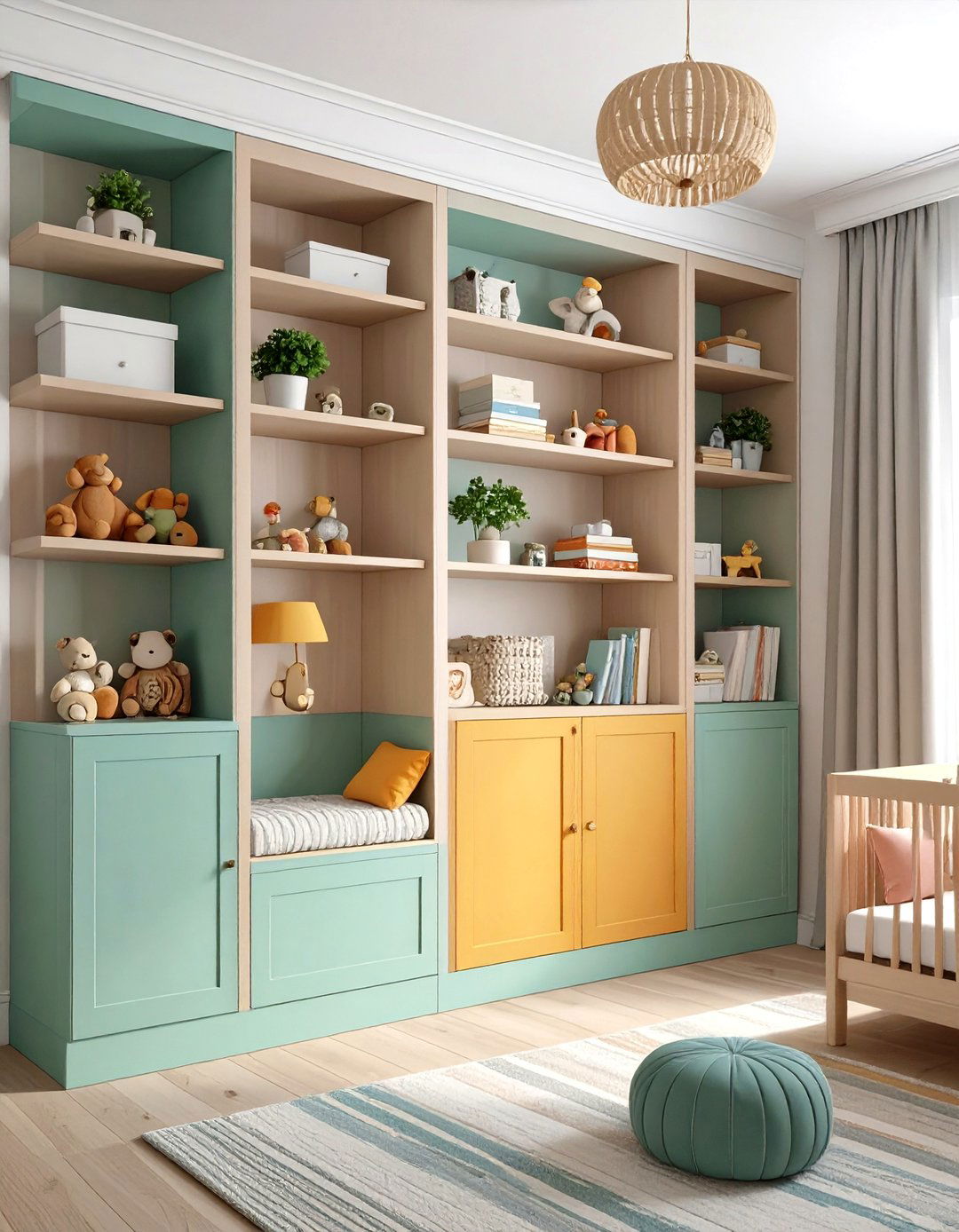
Built-in bookshelf wainscoting combines traditional panel profiles with recessed shelving niches for storybooks and keepsakes; the shelves align within the panel frames, forging a seamless transition between storage and architectural detail, so beloved bedtime stories become a decorative highlight.
18. Wood Drenching Wainscoting

Wood drenching extends the natural wood tone of wainscoting upward to cover entire walls or ceiling sections, enveloping the nursery in a warm, cocoon-like atmosphere; this full-wall treatment celebrates texture and grain, tapping into the 2025 trend for richly hued wood interiors that feel both luxurious and grounded.
19. DIY Tongue-and-Groove Wainscoting
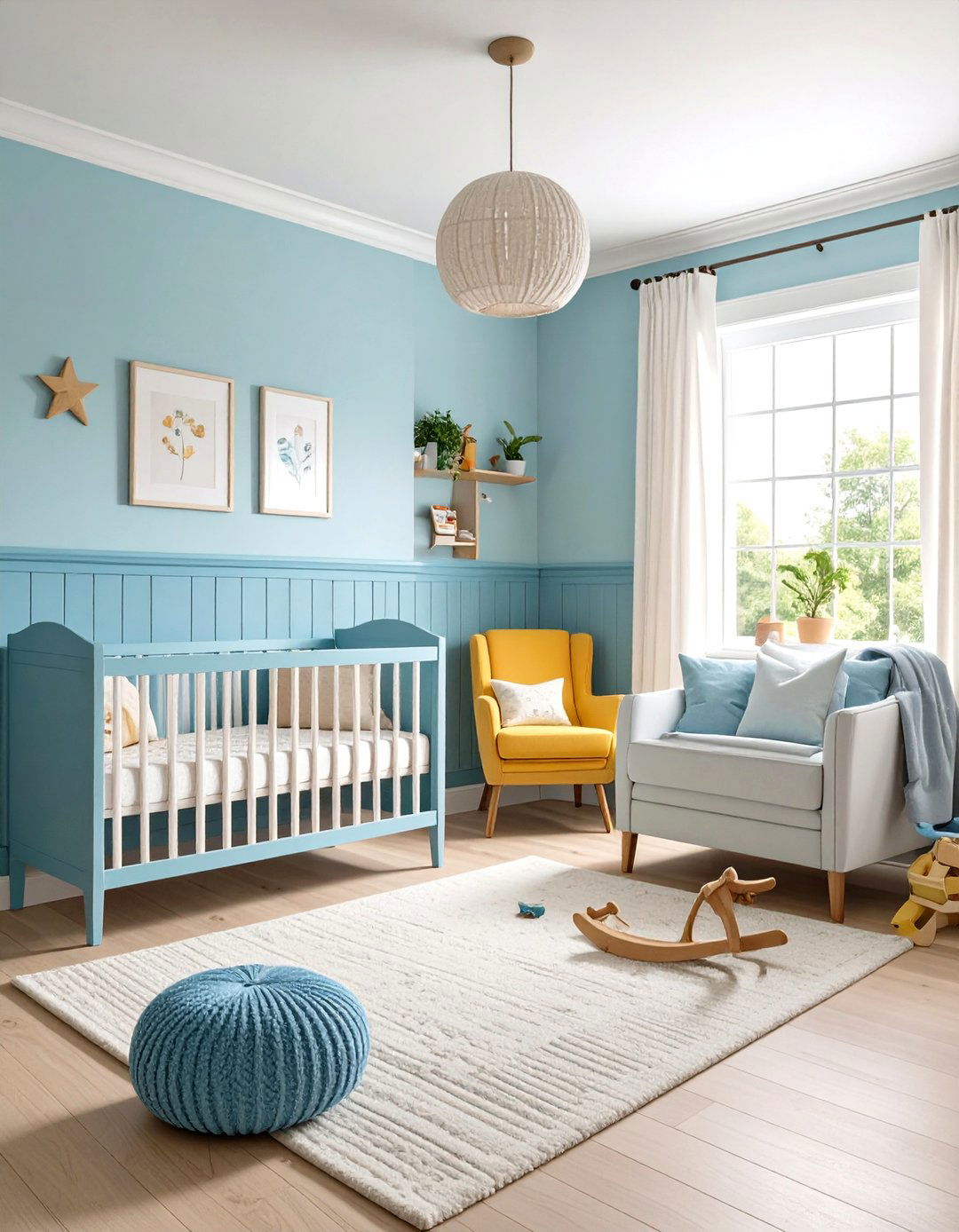
DIY tongue-and-groove wainscoting projects let parents install affordable pine or MDF panels using basic carpentry tools and clear, step-by-step instructions, honoring heritage aesthetics while avoiding contractor costs; finishing tips include precise height measurement, strategic outlet relocation, caulking seams, and selecting durable, washable paint for longevity.
20. Gender-Neutral Graphic Lines Wainscoting

Gender-neutral graphic lines wainscoting combines narrow, evenly spaced battens in a monochrome palette to evoke a hand-drawn stripe effect; this adaptable design bridges modern and classic sensibilities, offering a versatile backdrop that works with any accent color or theme, and can be complemented by black-and-white artwork or hyacinth wall sculptures for added interest.
Conclusion:
Wainscoting transforms nurseries from mere painted rooms into architecturally enriched spaces that blend durability, style, and personalization. Whether you opt for classic beadboard, farmhouse-chic boards, or contemporary geometric panels, each approach enhances texture and protects lower walls, all while framing complementary decor above. Temporary peel-and-stick options make it renter-friendly, and integrated shelving turns paneling into functional storage. By choosing the right height, color, and material—be it painted MDF, natural wood, or cushioned fabric—you can craft a nursery that evolves gracefully from infancy through childhood, delivering lasting charm and resilience.


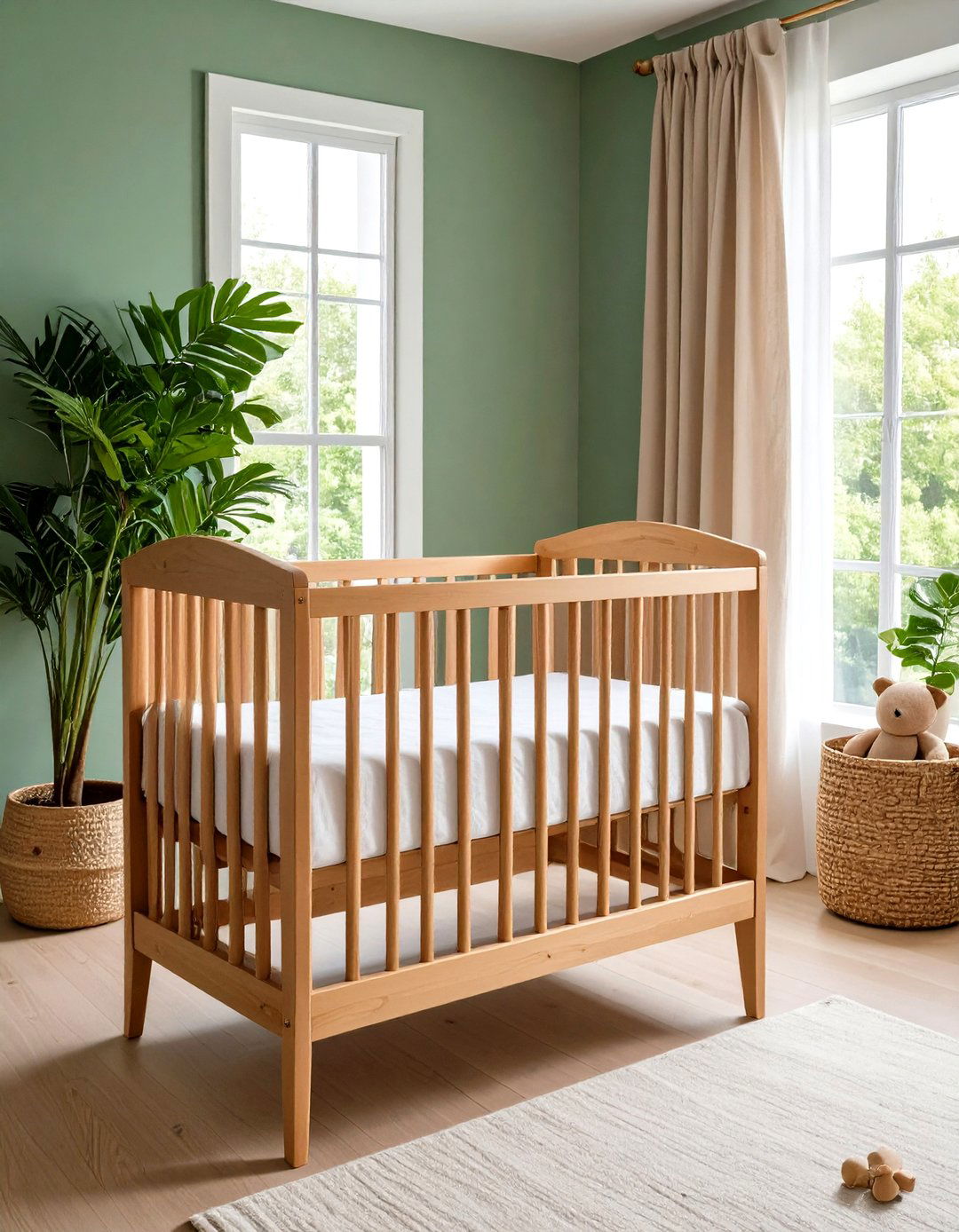
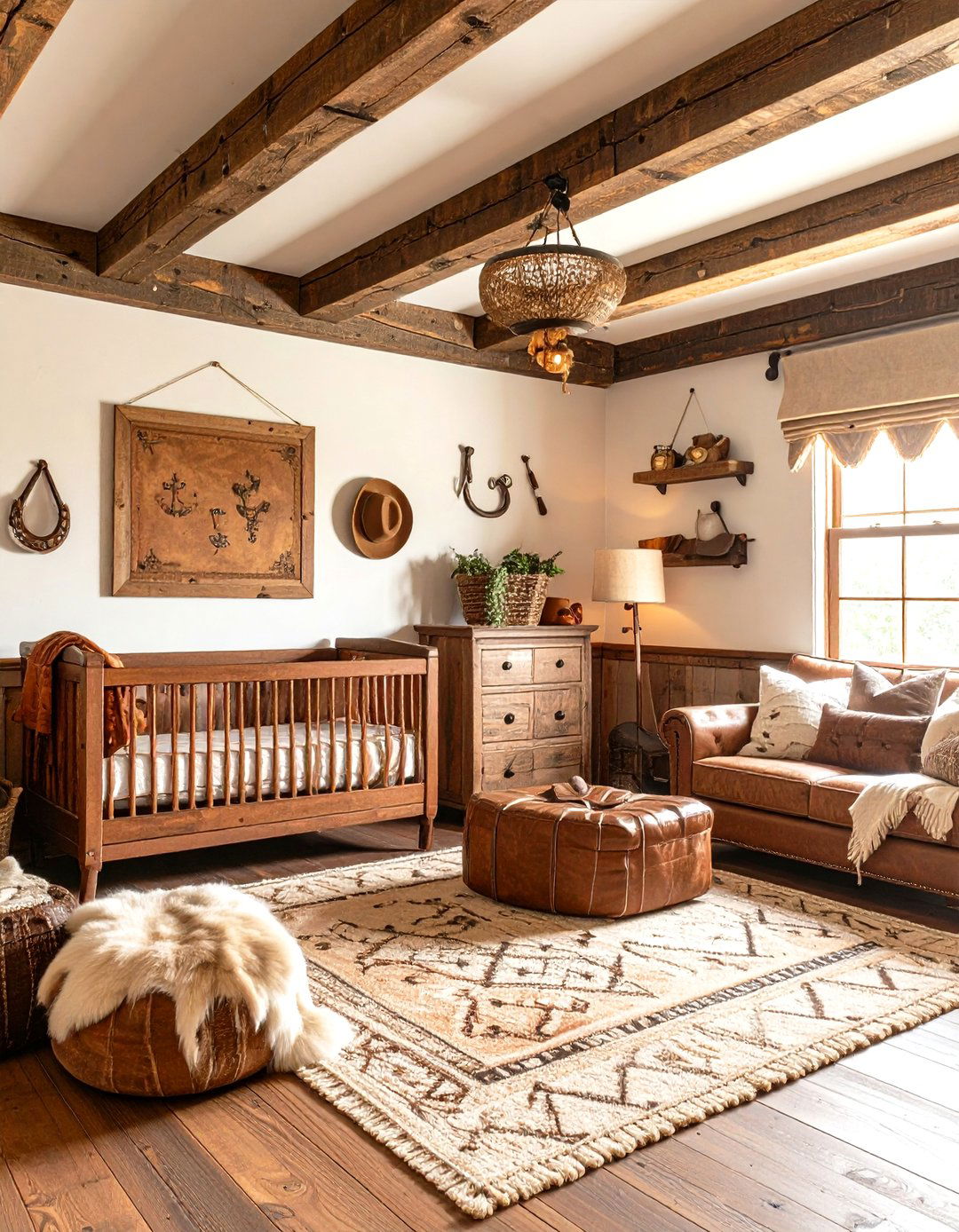
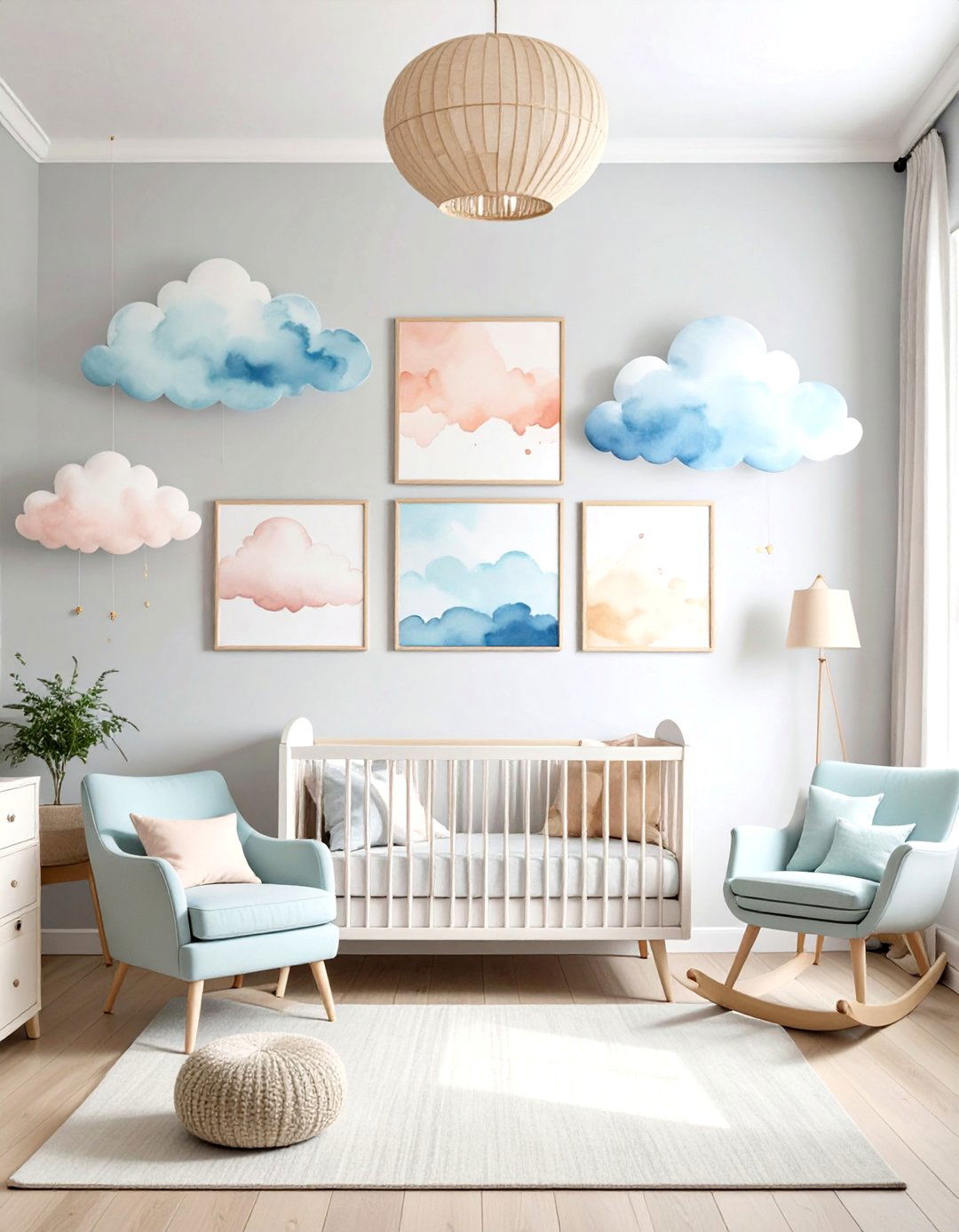
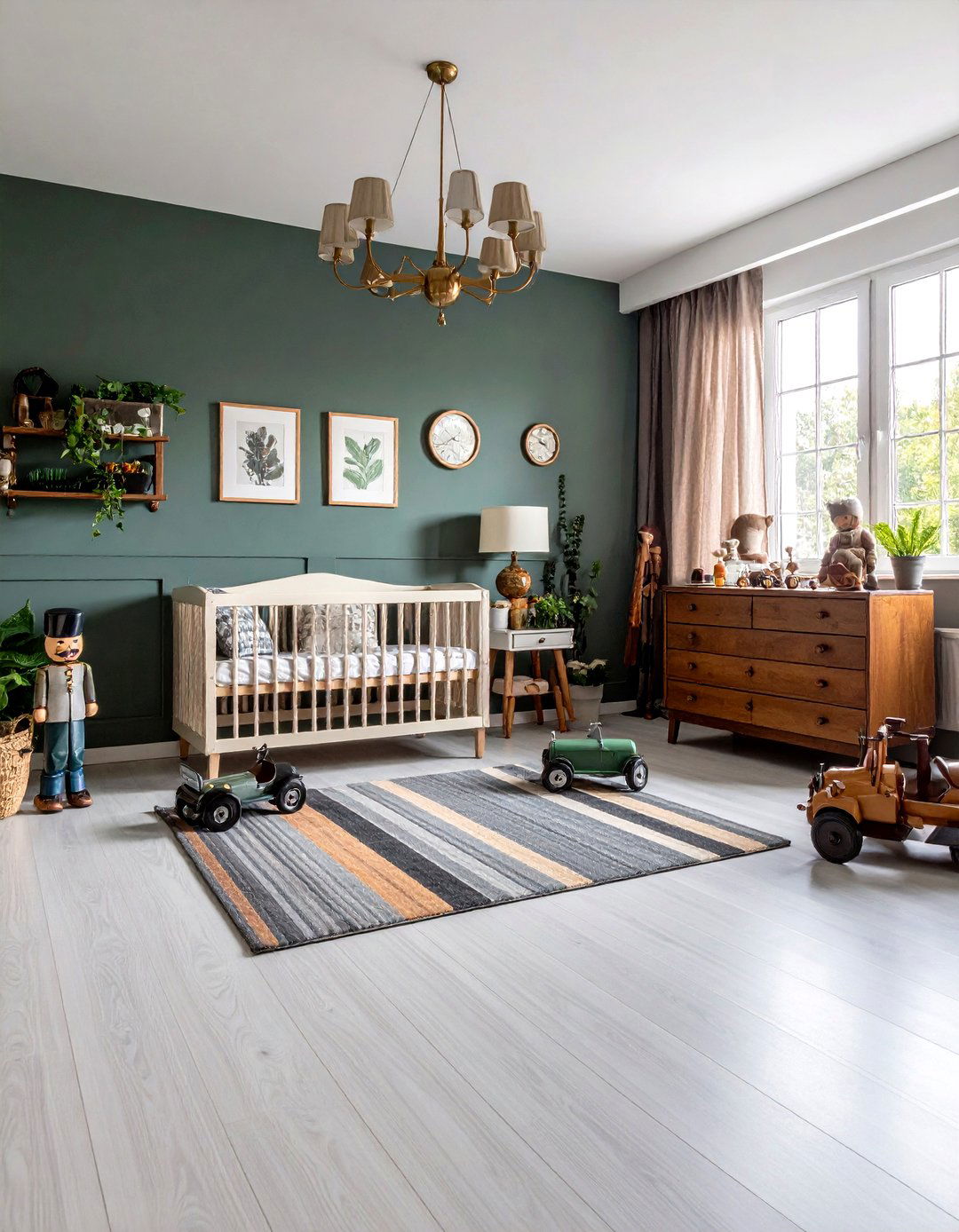
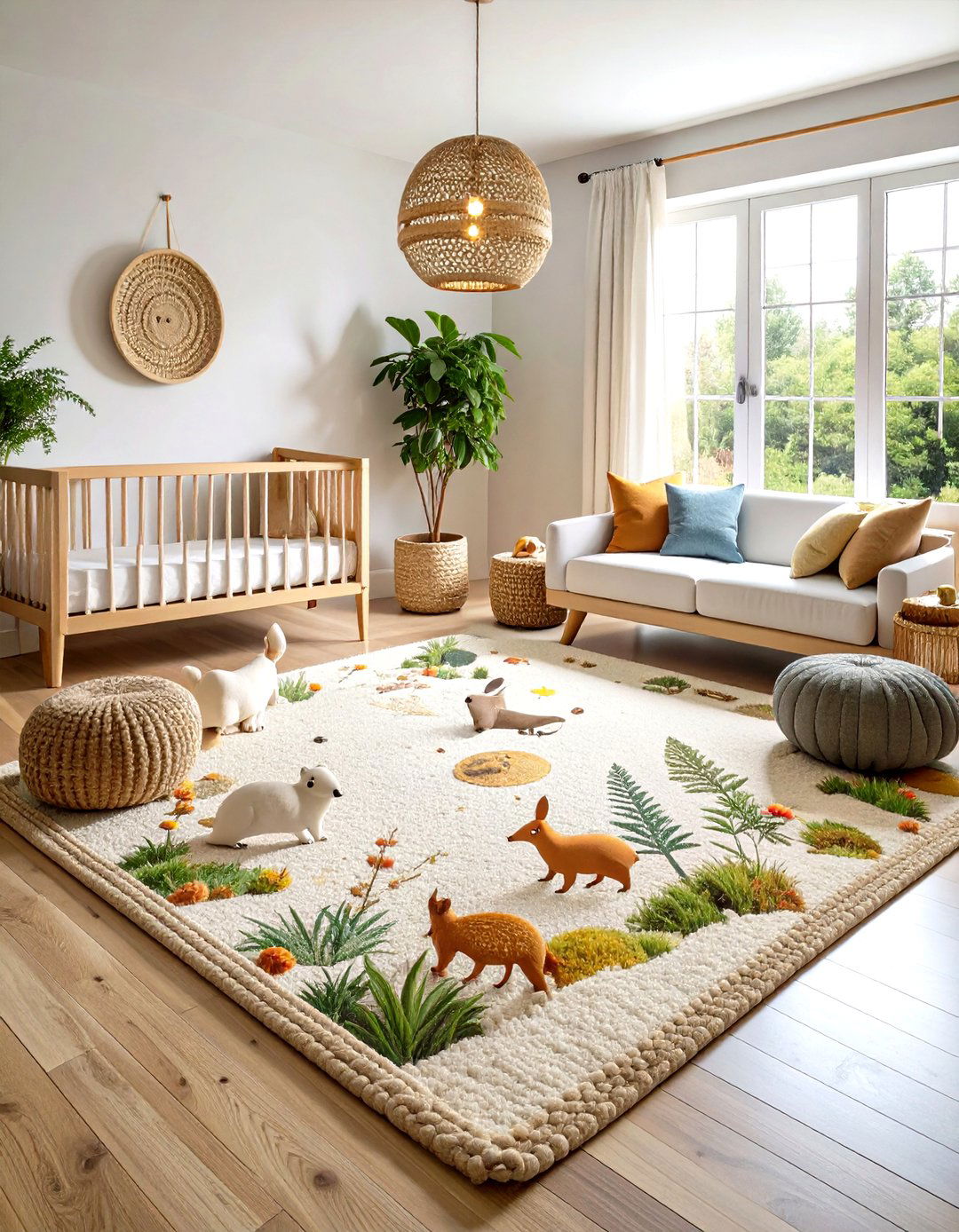
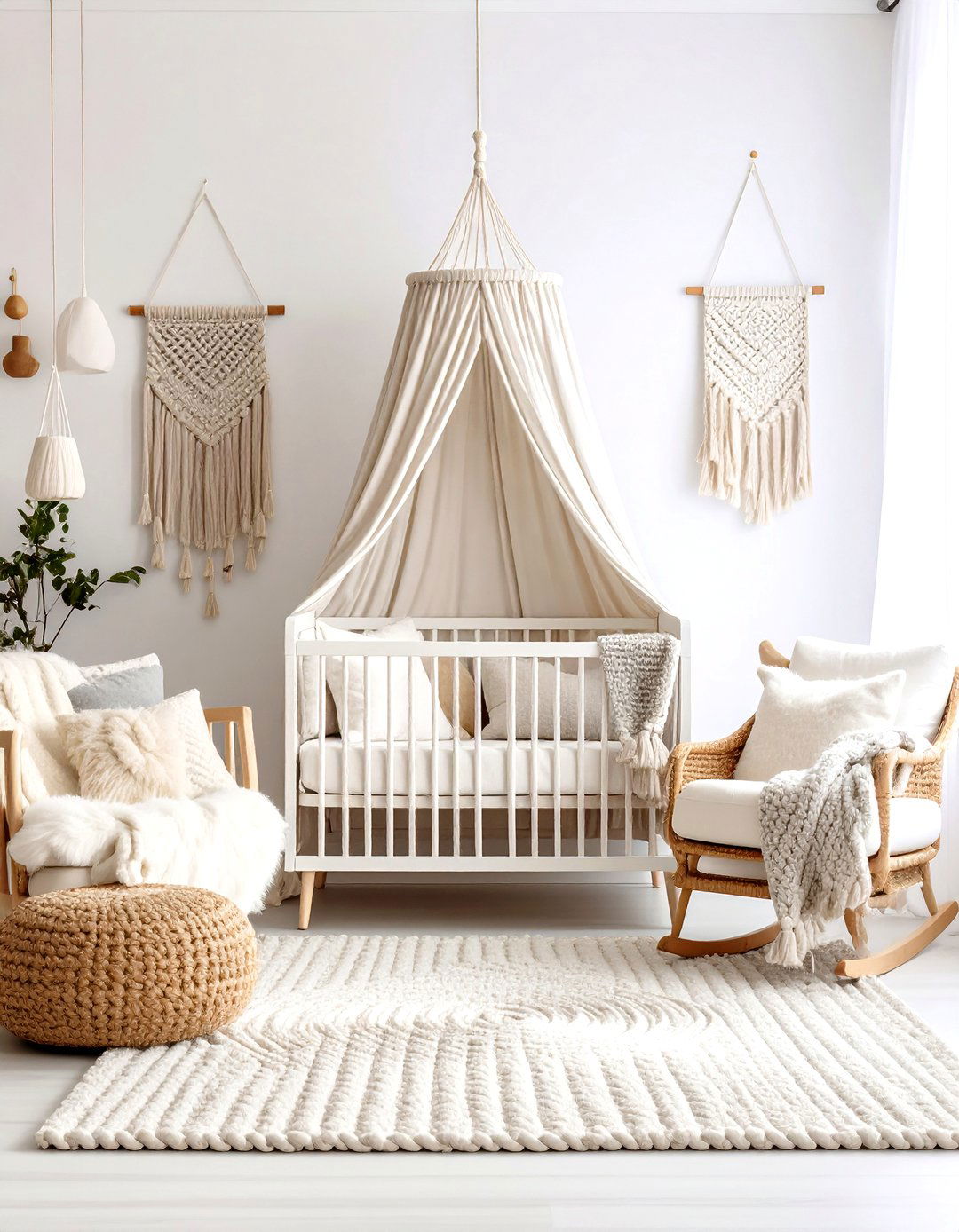

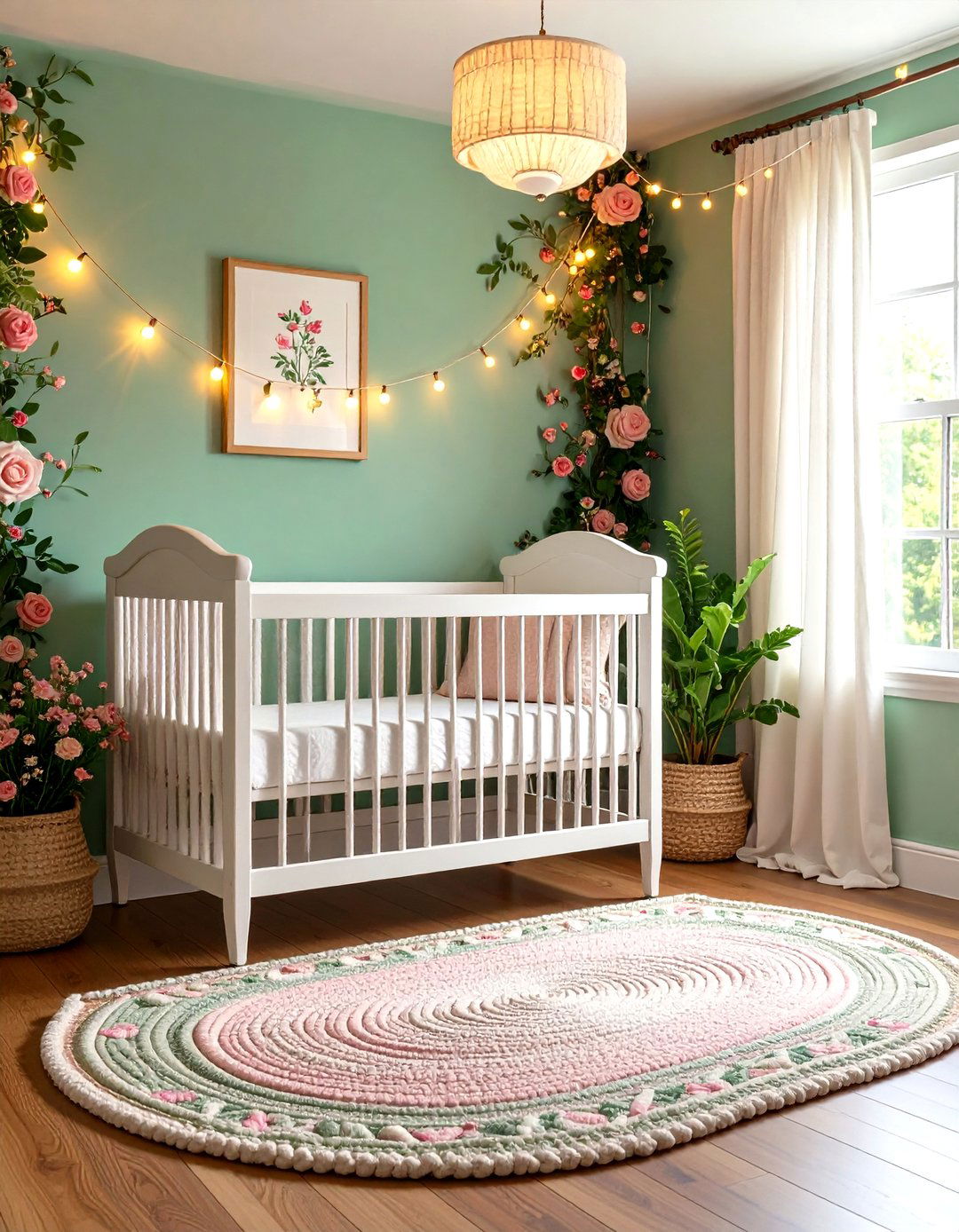
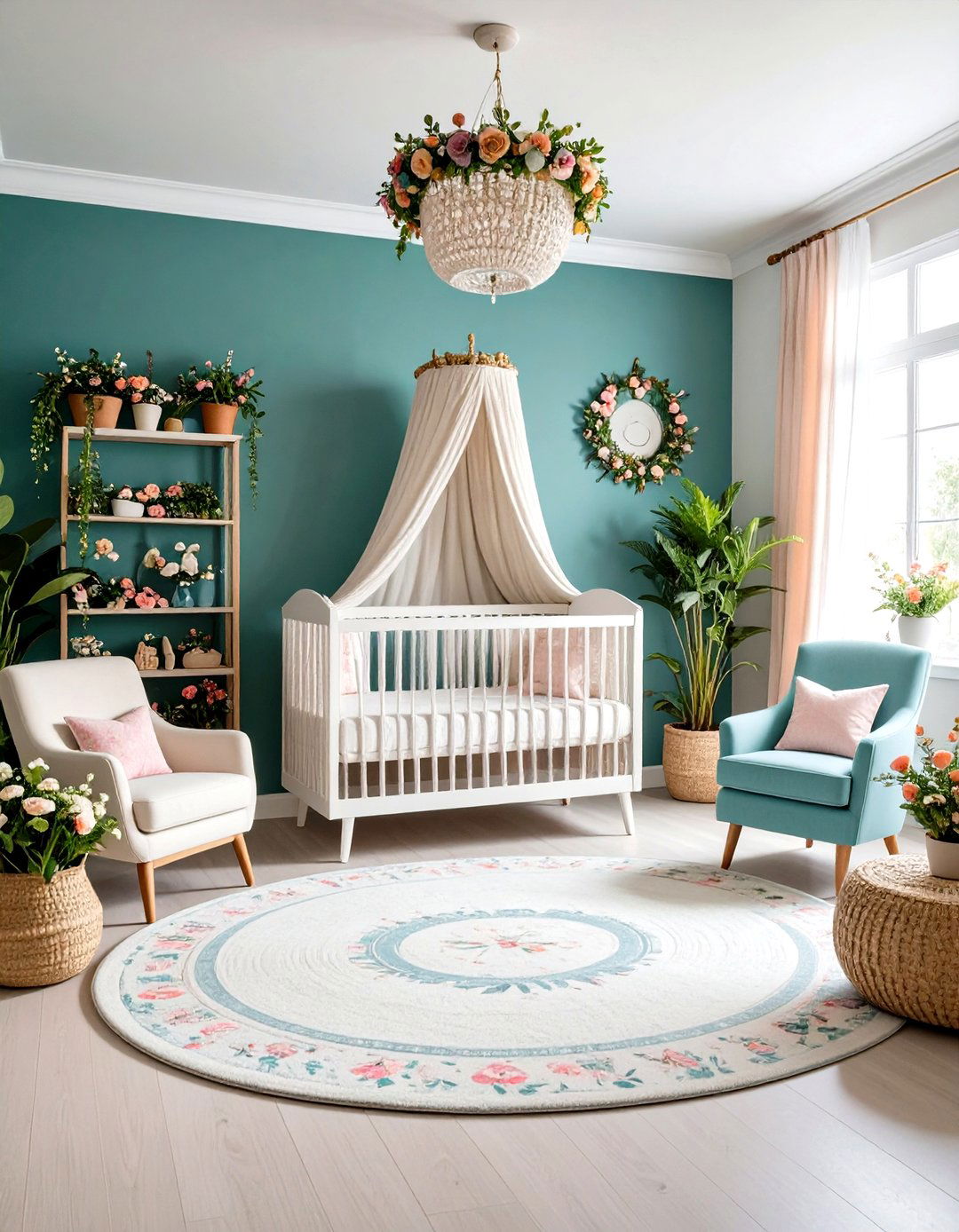
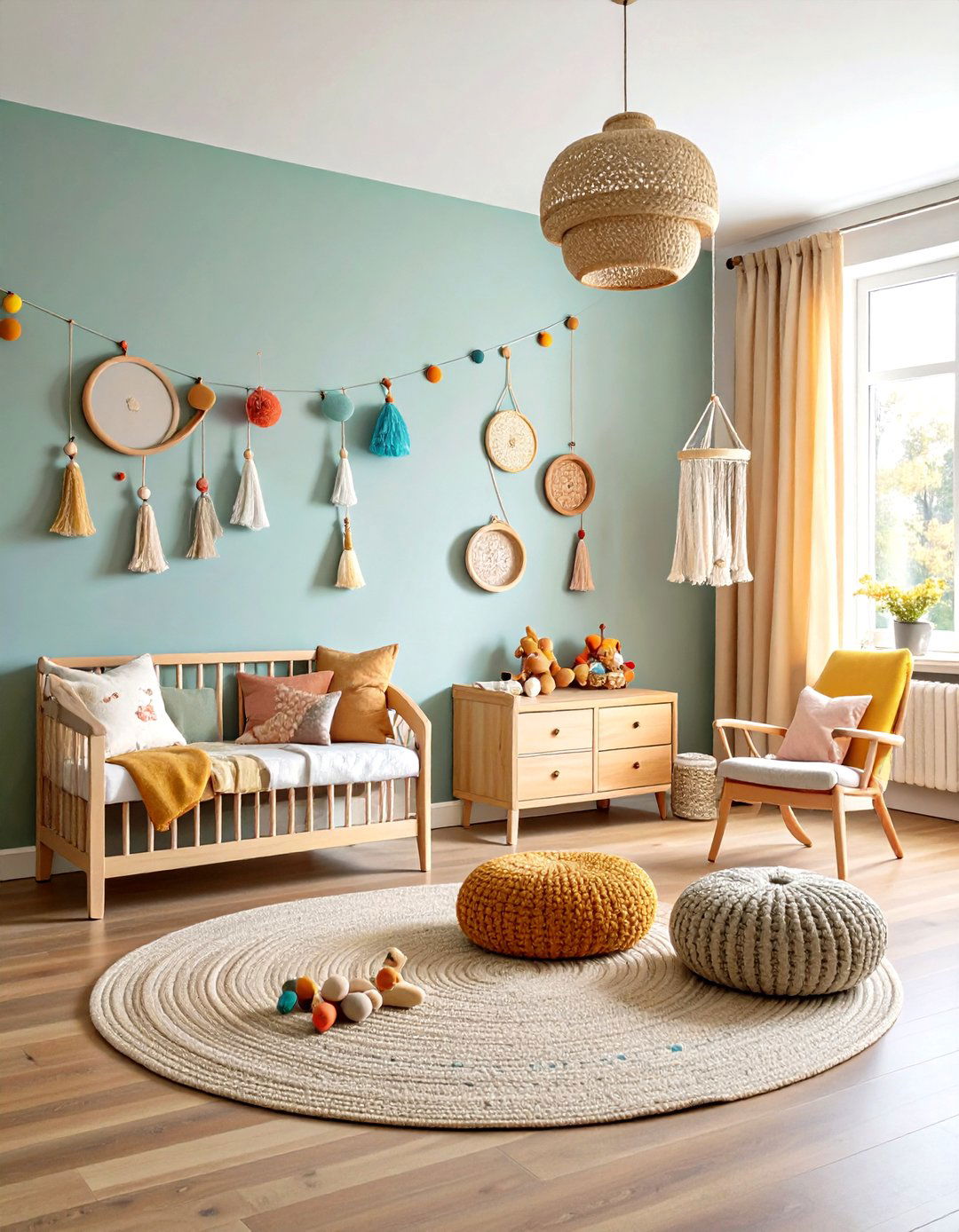
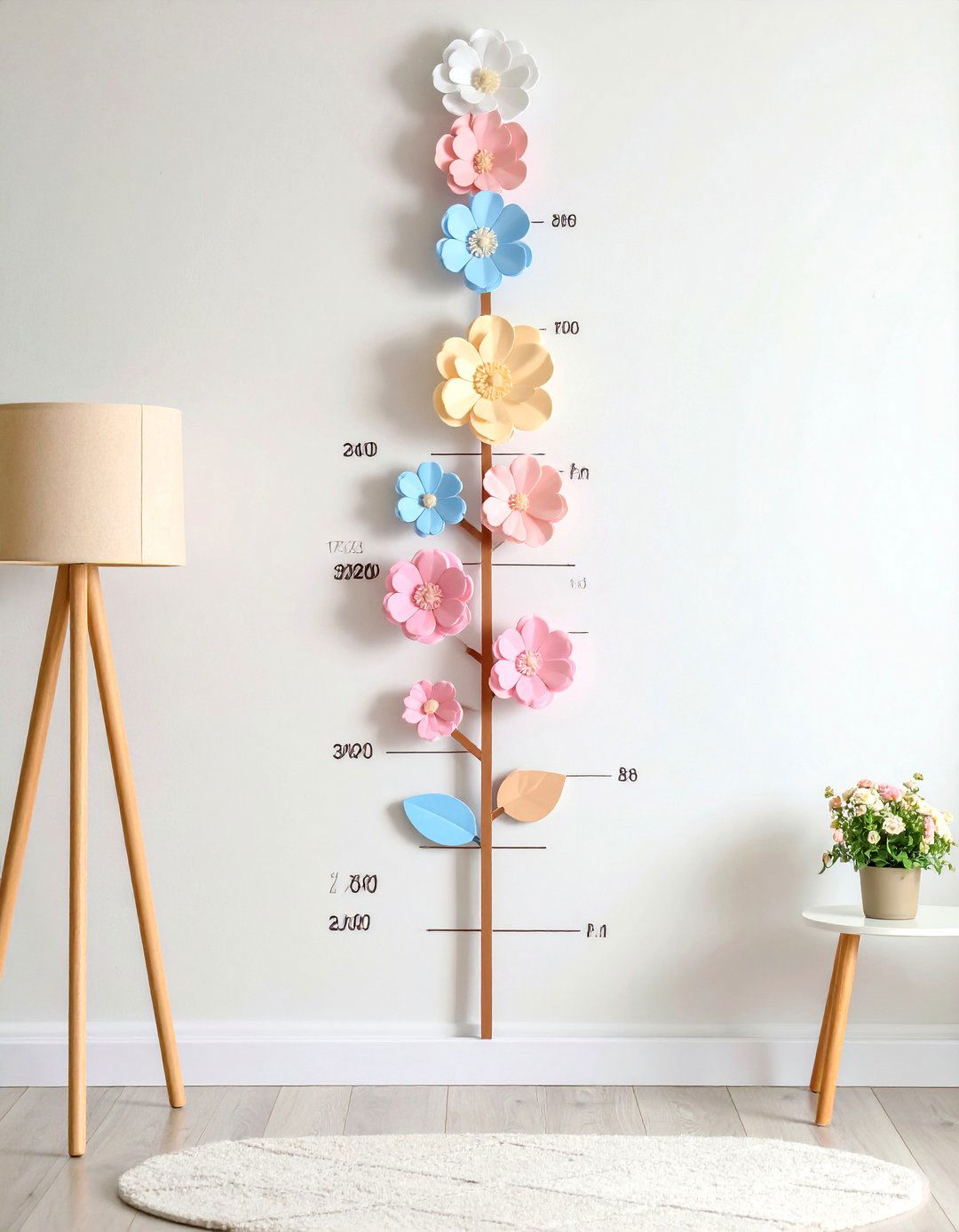
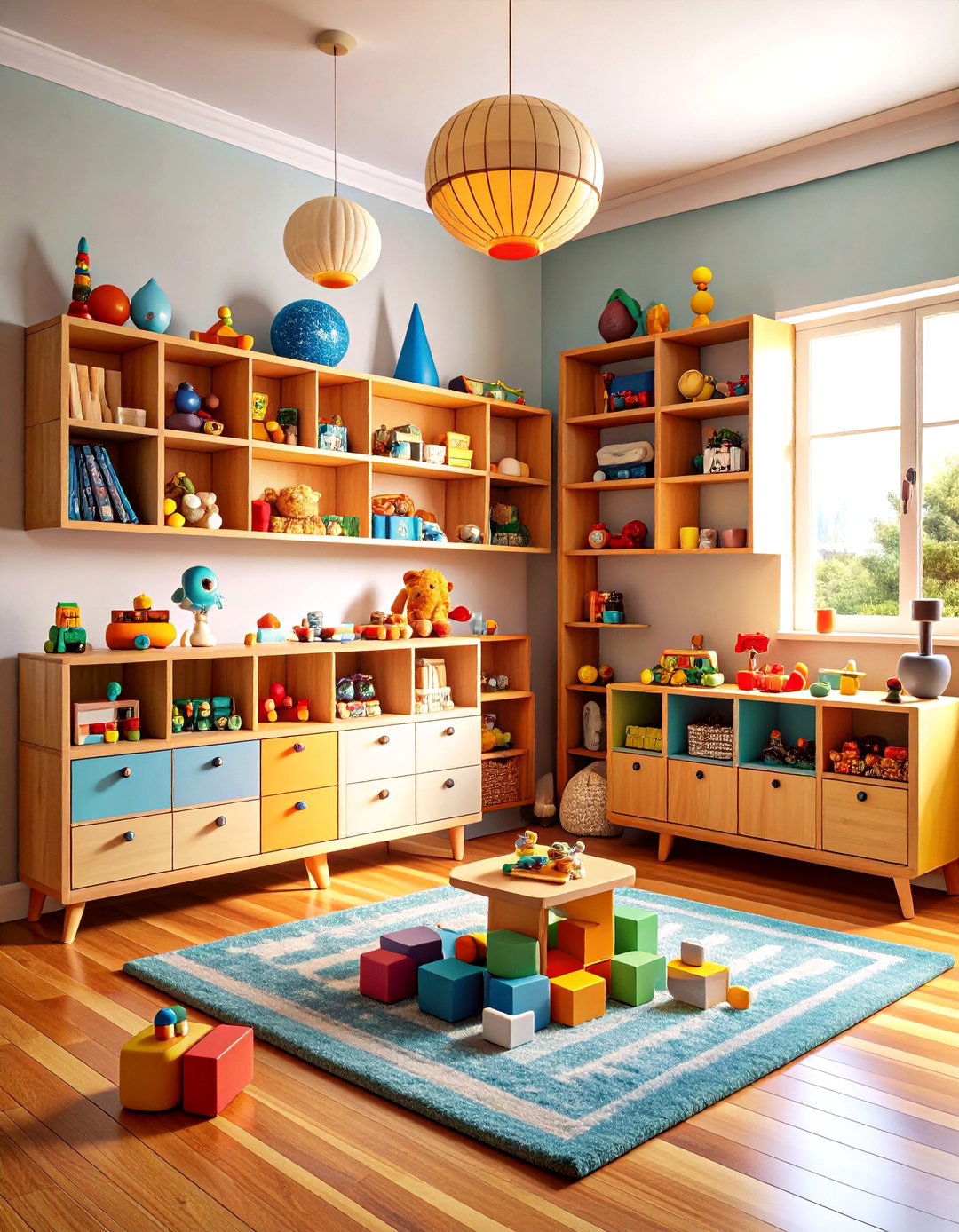

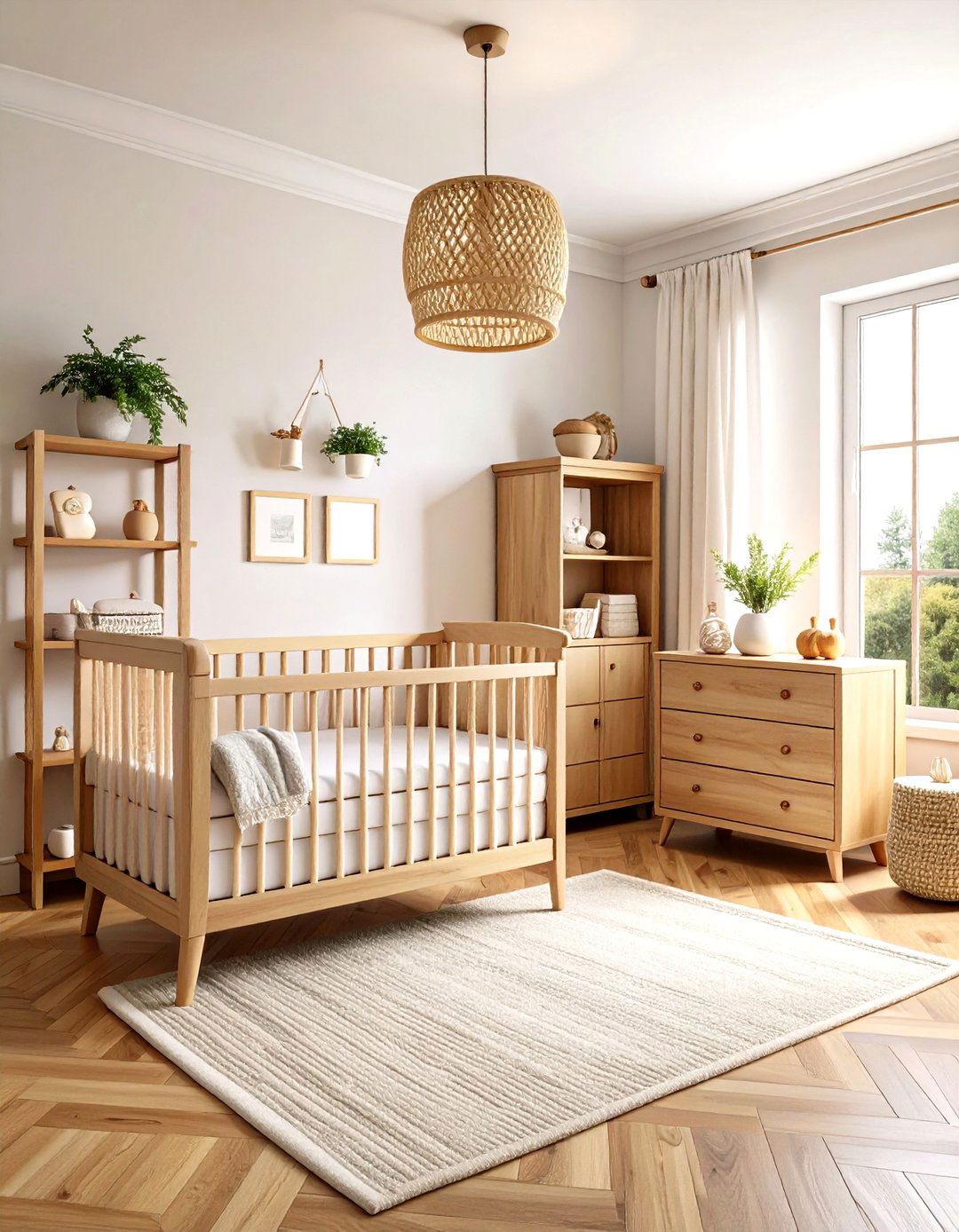
Leave a Reply